The Indian Air Force (IAF) is the
air arm of the
Indian Armed Forces. Its complement of personnel and aircraft assets ranks as the third most powerful air force in the world. Its primary mission is to secure Indian
airspace
Airspace is the portion of the atmosphere controlled by a country above its territory, including its territorial waters or, more generally, any specific three-dimensional portion of the atmosphere. It is not the same as aerospace, which is the ...
and to conduct
aerial warfare
Aerial warfare is the use of military aircraft and other flying machines in warfare. Aerial warfare includes bombers attacking enemy installations or a concentration of enemy troops or strategic targets; fighter aircraft battling for control o ...
during armed conflicts. It was officially established on 8 October 1932 as an auxiliary air force of the
British Empire which honoured India's aviation service during World War II with the prefix ''Royal''. After India gained independence from
United Kingdom in 1947, the name Royal Indian Air Force was kept and served in the name of the
Dominion of India. With the transition to a republic in 1950, the prefix ''Royal'' was removed.
Since 1950, the IAF has been involved in
four wars with neighbouring Pakistan. Other major operations undertaken by the IAF include
Operation Vijay,
Operation Meghdoot,
Operation Cactus
Operation or Operations may refer to:
Arts, entertainment and media
* ''Operation'' (game), a battery-operated board game that challenges dexterity
* Operation (music), a term used in musical set theory
* ''Operations'' (magazine), Multi-Man ...
and
Operation Poomalai. The IAF's mission expands beyond engagement with hostile forces, with the IAF participating in
United Nations peacekeeping missions.
The
President of India holds the rank of Supreme Commander of the IAF. , 170,576 personnel are in service with the Indian Air Force. The
Chief of the Air Staff, an
air chief marshal
Air chief marshal (Air Chf Mshl or ACM) is a high-ranking air officer originating from the Royal Air Force. The rank is used by air forces of many countries that have historical British influence. An air chief marshal is equivalent to an Admir ...
, is a
four-star officer and is responsible for the bulk of operational command of the Air Force. There is never more than one serving ACM at any given time in the IAF. The rank of
Marshal of the Air Force has been conferred by the President of India on one occasion in history, to
Arjan Singh. On 26 January 2002, Singh became the first and so far, only
five-star rank officer of the IAF.
Mission
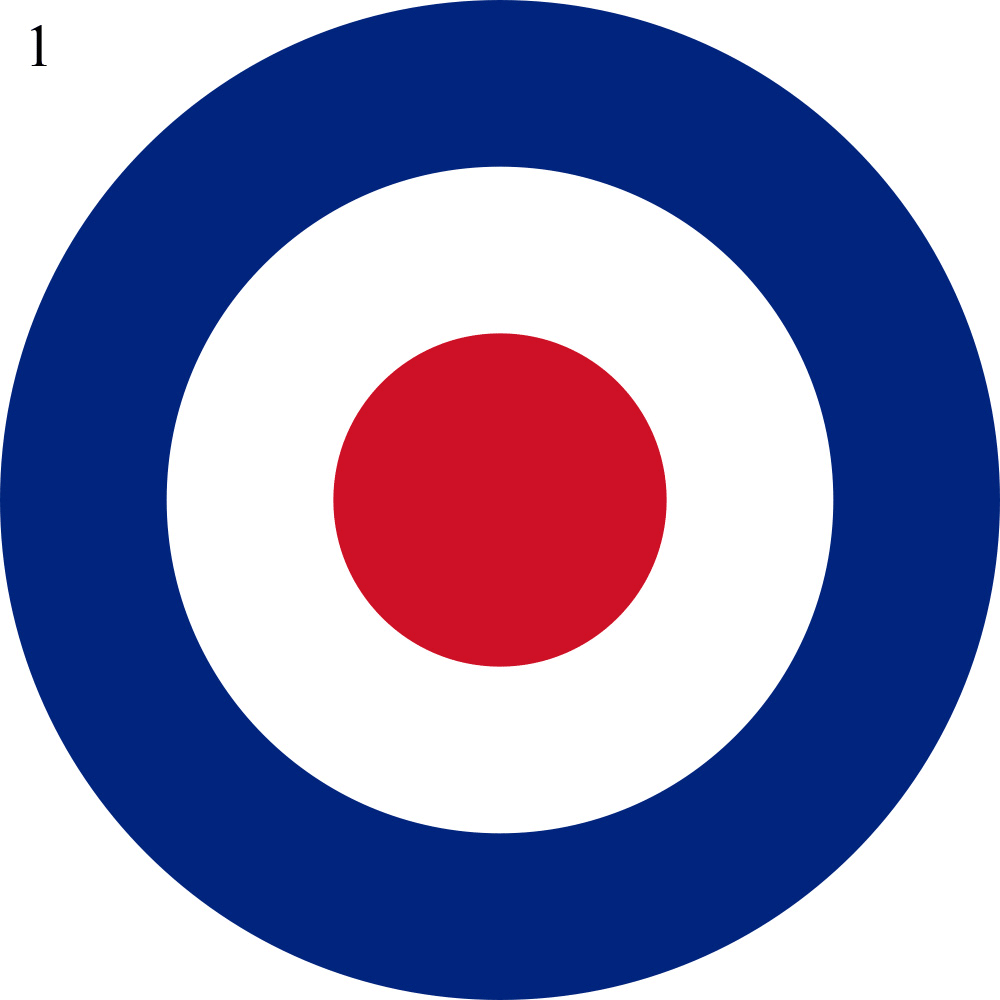
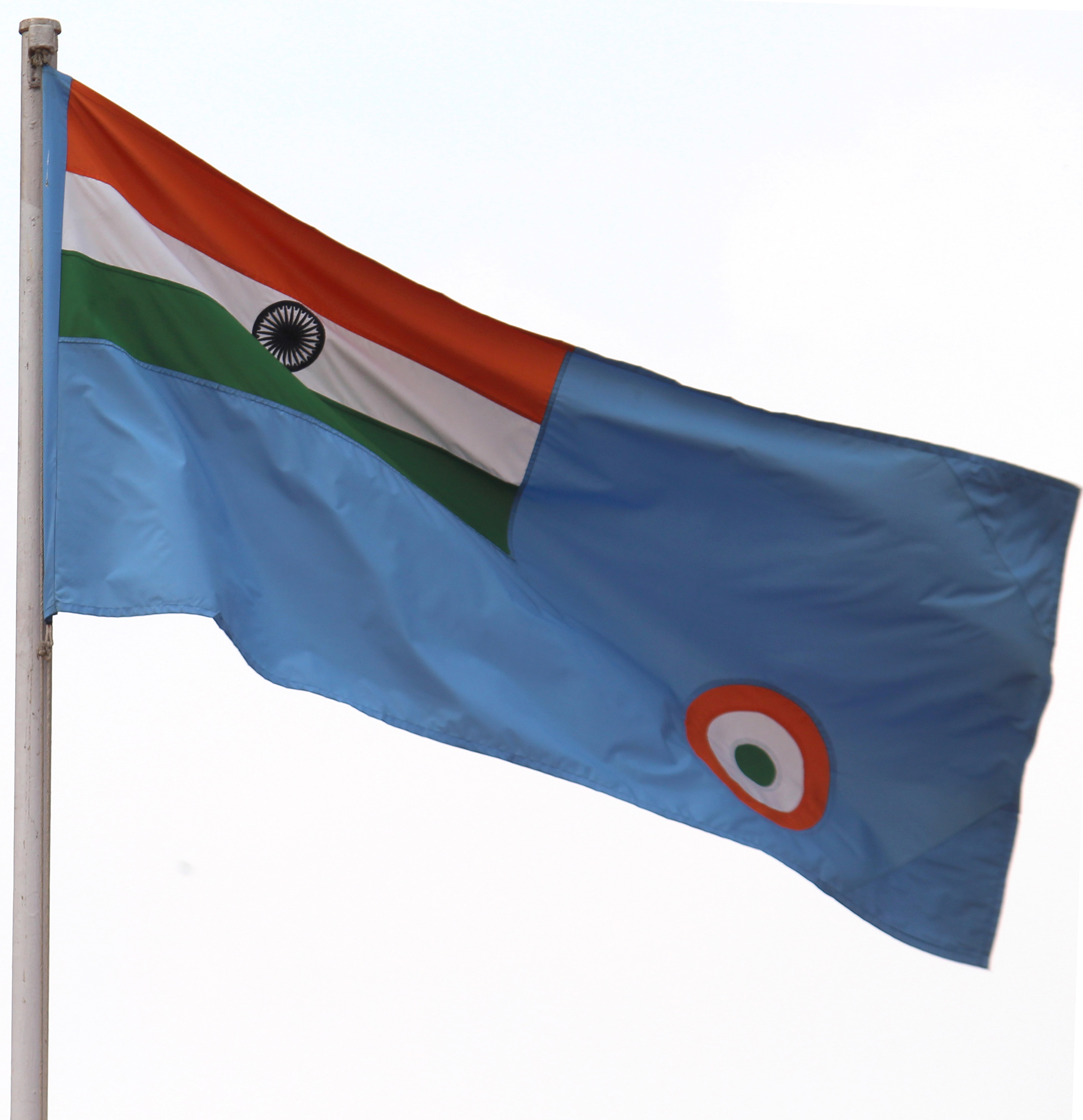
The IAF's mission is defined by the
Armed Forces Act of 1947, the
Constitution of India, and the Air Force Act of 1950. It decrees that in the aerial
battlespace:
Defence of India and every part there of including preparation for defence and all such acts as may be conducive in times of war to its prosecution and after its termination to effective demobilisation.
The Primary objective of IAF is to defend the nation and its airspace against Air
threats in coordination with Army and Navy.
The secondary purpose is to assist civil power during natural calamities and
internal disturbances.
The IAF provides close air support to the Indian Army troops in the battlefield
and also provides strategic and tactical airlift capabilities.
IAF also provides strategic air lift or secondary Airlift for the Indian Army.
The IAF also operates the Integrated Space Cell together with the other two
branches of the Indian Armed Forces, the Department of Space and the Indian
Space Research Organization (ISRO).
Rescue of civilians during natural disasters
Evacuation of Indian nationals from foreign countries in case of instability or
other problems
In practice, this is taken as a directive meaning the IAF bears the responsibility of safeguarding Indian airspace and thus furthering national interests in conjunction with the other branches of the armed forces. The IAF provides close air support to the
Indian Army troops on the battlefield as well as strategic and tactical airlift capabilities. The
Integrated Space Cell
The Integrated Space Cell was the nodal agency within the Government of India which oversees the security of its space based military and civilian hardware systems. It was to be jointly operated by all the three services of the Indian Armed Forces ...
is operated by the
Indian Armed Forces, the civilian
Department of Space
The Department of Space is an Indian government department responsible for administration of the Indian space program. It manages several agencies and institutes related to space exploration and space technologies. The Indian space program und ...
, and the
Indian Space Research Organisation
The Indian Space Research Organisation (ISRO; ) is the national space agency of India, headquartered in Bengaluru. It operates under the Department of Space (DOS) which is directly overseen by the Prime Minister of India, while the Chairman ...
. By uniting the civilian run space exploration organisations and the military faculty under a single Integrated Space Cell the military is able to efficiently benefit from innovation in the civilian sector of space exploration, and the civilian departments benefit as well.
The Indian Air Force, with highly trained crews, pilots, and access to modern military assets provides India with the capacity to provide rapid response evacuation, search-and-rescue (SAR) operations, and delivery of relief supplies to affected areas via cargo aircraft.
The IAF provided extensive assistance to relief operations during natural calamities such as the
Gujarat cyclone in 1998, the
tsunami in 2004, and
North India floods in 2013.
The IAF has also undertaken relief missions such as Operation Rainbow in
Sri Lanka
Sri Lanka (, ; si, ශ්රී ලංකා, Śrī Laṅkā, translit-std=ISO (); ta, இலங்கை, Ilaṅkai, translit-std=ISO ()), formerly known as Ceylon and officially the Democratic Socialist Republic of Sri Lanka, is an ...
.
History
Formation and early pilots
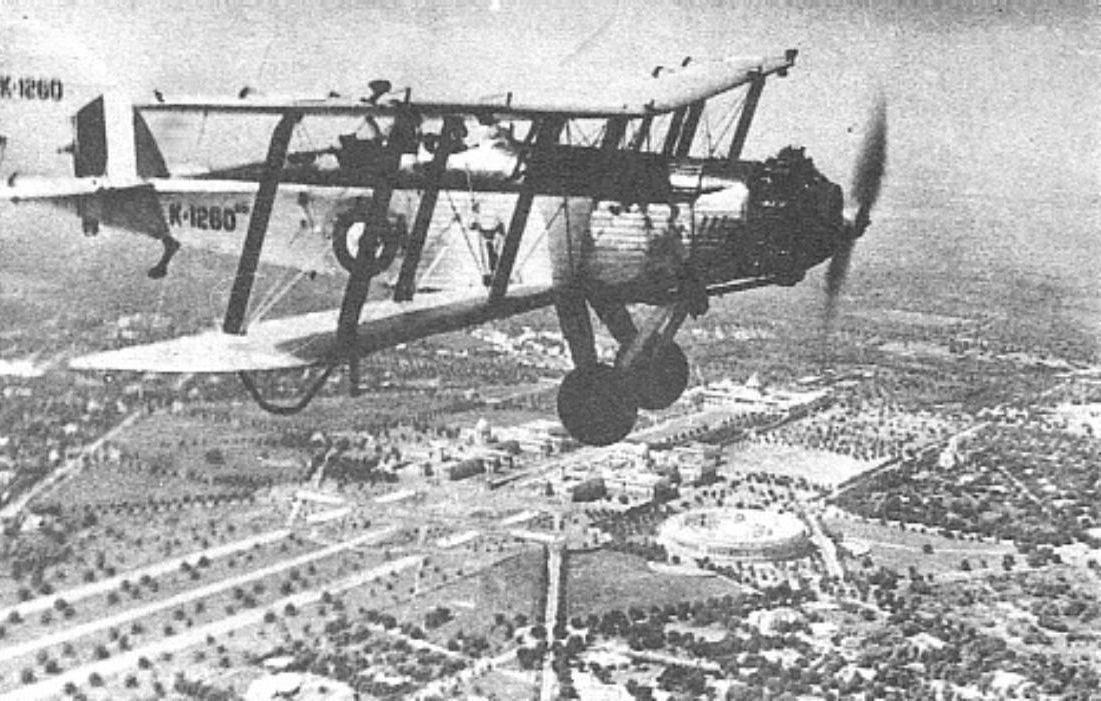
The Indian Air Force was established on 8 October 1932 in
British India as an auxiliary air force
of the
Royal Air Force. The enactment of the Indian Air Force Act 1932
stipulated out their auxiliary status and enforced the adoption of the Royal Air Force uniforms, badges, brevets and insignia.
On 1 April 1933, the IAF commissioned its first squadron, No.1 Squadron, with four
Westland Wapiti biplanes and five Indian pilots. The Indian pilots were led by British
RAF Commanding officer Flight Lieutenant (later Air Vice Marshal)
Cecil Bouchier
Air Vice Marshal Sir Cecil Arthur Bouchier (14 October 1895 – 15 June 1979) served with the British Army, Royal Flying Corps, Indian Air Force and Royal Air Force from 1915 to 1953. He was Air Officer Commanding British Commonwealth Air Fo ...
.

World War II (1939–1945)

During
World War II, the IAF played an instrumental role in halting the advance of the
Japanese army
The Japan Ground Self-Defense Force ( ja, 陸上自衛隊, Rikujō Jieitai), , also referred to as the Japanese Army, is the land warfare branch of the Japan Self-Defense Forces. Created on July 1, 1954, it is the largest of the three service b ...
in
Burma, where the first IAF air strike was executed. The target for this first mission was the Japanese military base in
Arakan, after which IAF strike missions continued against the Japanese airbases at
Mae Hong Son,
Chiang Mai
Chiang Mai (, from th, เชียงใหม่ , nod, , เจียงใหม่ ), sometimes written as Chiengmai or Chiangmai, is the largest city in northern Thailand, the capital of Chiang Mai province and the second largest city in ...
and
Chiang Rai in northern
Thailand.
The IAF was mainly involved in
strike,
close air support
In military tactics, close air support (CAS) is defined as air action such as air strikes by fixed or rotary-winged aircraft against hostile targets near friendly forces and require detailed integration of each air mission with fire and moveme ...
,
aerial reconnaissance,
bomber escort and pathfinding missions for RAF and
USAAF heavy bombers. RAF and IAF pilots would train by flying with their non-native air wings to gain combat experience and communication proficiency. Besides operations in the
Burma Theatre IAF pilots participated in air operations in
North Africa and
Europe.
In addition to the IAF, many native Indians and some 200 Indians resident in Britain volunteered to join the
RAF and
Women's Auxiliary Air Force. One such volunteer was Sergeant Shailendra Eknath Sukthankar, who served as a navigator with No. 83 Squadron. Sukthankar was commissioned as an officer, and on 14 September 1943, received the
DFC. Squadron Leader Sukthankar eventually completed 45 operations, 14 of them on board the
RAF Museum's Avro Lancaster R5868. Another volunteer was Assistant Section Officer
Noor Inayat Khan
Noor-un-Nisa Inayat Khan, GC (1 January 1914 – 13 September 1944), also known as Nora Inayat-Khan and Nora Baker, was a British resistance agent in France in World War II who served in the Special Operations Executive (SOE). The purpose of S ...
a Muslim pacifist and Indian nationalist who joined the WAAF, in November 1940, to fight against Nazism. Noor Khan served bravely as a secret agent with the
Special Operations Executive (SOE) in France, but was eventually betrayed and captured.
Many of these Indian airmen were seconded or transferred to the expanding IAF such as Squadron Leader
Mohinder Singh Pujji
Squadron Leader Mohinder Singh Pujji DFC (14 August 1918 – 18 September 2010), also known as Mahinder Singh Pujji, was a distinguished Royal Air Force fighter pilot and one of the first Indian Sikh pilots to volunteer with the Royal Air Force ...
DFC who led
No. 4 Squadron IAF
No. 4 Squadron IAF (Oorials) is a fighter squadron of the Indian Air Force (IAF) equipped with the Mikoyan-Gurevich MiG-21, MiG-21 Bison, based at Uttarlai Air Force Station in Uttarlai in Barmer, Rajasthan, India. Since its establishment during ...
in Burma.
During the war, the IAF experienced a phase of steady expansion. New aircraft added to the fleet included the US-built
Vultee Vengeance,
Douglas Dakota, the British
Hawker Hurricane,
Supermarine Spitfire
The Supermarine Spitfire is a British single-seat fighter aircraft used by the Royal Air Force and other Allied countries before, during, and after World War II. Many variants of the Spitfire were built, from the Mk 1 to the Rolls-Royce Grif ...
, and
Westland Lysander.
In recognition of the valiant service by the IAF,
King George VI
George VI (Albert Frederick Arthur George; 14 December 1895 – 6 February 1952) was King of the United Kingdom and the Dominions of the British Commonwealth from 11 December 1936 until his death in 1952. He was also the last Emperor of Ind ...
conferred the
prefix
A prefix is an affix which is placed before the Word stem, stem of a word. Adding it to the beginning of one word changes it into another word. For example, when the prefix ''un-'' is added to the word ''happy'', it creates the word ''unhappy'' ...
"Royal" in 1945. Thereafter the IAF was referred to as the ''Royal Indian Air Force''. In 1950, when India became a republic, the prefix was dropped and it reverted to being the Indian Air Force.
First years of independence (1947–1950)

After it became independent from the
British Empire in 1947,
British India was
partitioned into the new states of the
Dominion of India and the
Dominion of Pakistan. Along the lines of the geographical partition, the assets of the air force were divided between the new countries. India's air force retained the name of the Royal Indian Air Force, but three of the ten operational squadrons and facilities, located within the borders of Pakistan, were transferred to the
Royal Pakistan Air Force.
The RIAF Roundel was changed to an interim 'Chakra' roundel derived from the
Ashoka Chakra.
Around the same time,
conflict broke out between them over the control of the
princely state of Jammu & Kashmir. With Pakistani forces moving into the state, its Maharaja decided to accede to India in order to receive military help.
The day after, the
Instrument of Accession was signed, the RIAF was called upon to transport troops into the war zone. And this was when a good management of logistics came into help.
[ This led to the eruption of full-scale war between India and Pakistan, though there was no formal declaration of war. During the war, the RIAF did not engage the Pakistan Air Force in air-to-air combat; however, a couple of IAF Hawker Tempest fighters did intercept a Pakistani Douglas DC-3 transport aircraft & tried to shoot it down but the pilot of the DC-3 (]Mukhtar Ahmad Dogar
Air Commodore Mukhtar Ahmad Dogar (15 May 1922 – 5 June 2004) was the Pakistan Air Force Bomber plane, bomber pilot and aerial warfare specialist who was the first military person to receive the Pakistani military award Sitara-e-Jurat. ) managed to evade the fighters. Other than that, it also provided effective transport and close air support to the Indian troops.
 When India became a republic in 1950, the prefix 'Royal' was dropped from the Indian Air Force.
When India became a republic in 1950, the prefix 'Royal' was dropped from the Indian Air Force.
Congo crisis and Annexation of Goa (1960–1961)
The IAF saw significant conflict in 1960, when Belgium's 75-year rule over Congo
Congo or The Congo may refer to either of two countries that border the Congo River in central Africa:
* Democratic Republic of the Congo, the larger country to the southeast, capital Kinshasa, formerly known as Zaire, sometimes referred to a ...
ended abruptly, engulfing the nation in widespread violence and rebellion. The IAF activated No. 5 Squadron, equipped with English Electric Canberra, to support the United Nations Operation in the Congo. The squadron started undertaking operational missions in November.Lisbon
Lisbon (; pt, Lisboa ) is the capital and largest city of Portugal, with an estimated population of 544,851 within its administrative limits in an area of 100.05 km2. Grande Lisboa, Lisbon's urban area extends beyond the city's administr ...
.[ The Indian Air Force was requested to provide support elements to the ground force in what was called Operation Vijay. Probing flights by some fighters and bombers were carried out from 8–18 December to draw out the ]Portuguese Air Force
, colours =
, colours_label =
, march =
, mascot =
, anniversaries = 1 July
, equipment =
, equipment_label ...
, but to no avail.Canberra
Canberra ( )
is the capital city of Australia. Founded following the federation of the colonies of Australia as the seat of government for the new nation, it is Australia's largest inland city and the eighth-largest city overall. The ci ...
bombers bombed the runway of Dabolim airfield taking care not to bomb the Terminals and the ATC tower. Two Portuguese transport aircraft (a Super Constellation and a DC-6) found on the airfield were left alone so that they could be captured intact. However the Portuguese pilots managed to take off the aircraft from the still damaged airfield and made their getaway to Portugal.[ Hunters attacked the wireless station at Bambolim. ]Vampires
A vampire is a mythical creature that subsists by feeding on the vital essence (generally in the form of blood) of the living. In European folklore, vampires are undead creatures that often visited loved ones and caused mischief or deaths ...
were used to provide air support to the ground forces.Daman
Daman may refer to: place
Places
*Dadra and Nagar Haveli and Daman and Diu, a union territory in India
**Daman and Diu, former union territory of India, now part of Dadra and Nagar Haveli and Daman and Diu
**Daman district, India
***Daman, India ...
, Mystères were used to strike Portuguese gun positions.
Border disputes and changes in the IAF (1962–1971)
 In 1962, border disagreements between China and India escalated to a war when China mobilised its troops across the Indian border.
In 1962, border disagreements between China and India escalated to a war when China mobilised its troops across the Indian border.Jammu and Kashmir Jammu and Kashmir may refer to:
* Kashmir, the northernmost geographical region of the Indian subcontinent
* Jammu and Kashmir (union territory), a region administered by India as a union territory
* Jammu and Kashmir (state), a region administered ...
.1965 War
The Indo-Pakistani War of 1965 or the Second Kashmir War was a culmination of skirmishes that took place between April 1965 and September 1965 between Pakistan and India. The conflict began following Pakistan's Operation Gibraltar, which was d ...
.
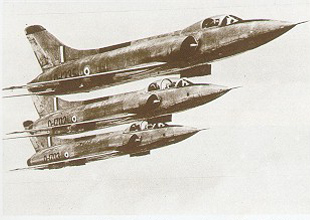 After the 1965 war, the IAF underwent a series of changes to improve its capabilities. In 1966, the Para Commandos regiment was created. To increase its logistics supply and rescue operations ability, the IAF inducted 72
After the 1965 war, the IAF underwent a series of changes to improve its capabilities. In 1966, the Para Commandos regiment was created. To increase its logistics supply and rescue operations ability, the IAF inducted 72 HS 748
The Hawker Siddeley HS 748 is a medium-sized turboprop airliner originally designed and initially produced by the British aircraft manufacturer Avro. It was the last aircraft to be developed by Avro prior to its absorption by Hawker Siddeley ...
s which were built by Hindustan Aeronautics Limited (HAL) under licence from Avro
AVRO, short for Algemene Vereniging Radio Omroep ("General Association of Radio Broadcasting"), was a Dutch public broadcasting association operating within the framework of the Nederlandse Publieke Omroep system. It was the first public broad ...
. India started to put more stress on indigenous manufacture of fighter aircraft
Fighter aircraft are fixed-wing military aircraft designed primarily for air-to-air combat. In military conflict, the role of fighter aircraft is to establish air superiority of the battlespace. Domination of the airspace above a battlefield ...
. As a result, HAL HF-24 Marut
The HAL HF-24 Marut ("Spirit of the Tempest") was an Indian fighter-bomber aircraft of the 1960s. Developed by Hindustan Aeronautics Limited (HAL), with Kurt Tank as lead designer. The Project Engineer from HAL was George William Benjamin. It ...
, designed by the famed German aerospace engineer Kurt Tank, were inducted into the air force. HAL also started developing an improved version of the Folland Gnat, known as HAL Ajeet. At the same time, the IAF also started inducting Mach 2 capable Soviet MiG-21 and Sukhoi Su-7
The Sukhoi Su-7 ( NATO designation name: Fitter-A) is a swept wing, supersonic fighter aircraft developed by the Soviet Union in 1955. Originally, it was designed as a tactical, low-level dogfighter, but was not successful in this role. On the ...
fighters.
Bangladesh Liberation War (1971)
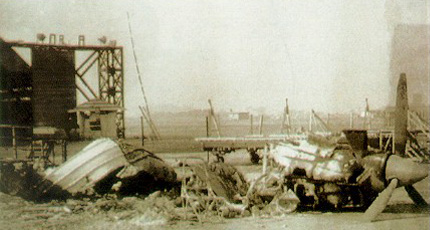 By late 1971, the intensification of the independence movement in East Pakistan lead to the
By late 1971, the intensification of the independence movement in East Pakistan lead to the Bangladesh Liberation War
The Bangladesh Liberation War ( bn, মুক্তিযুদ্ধ, , also known as the Bangladesh War of Independence, or simply the Liberation War in Bangladesh) was a revolution and War, armed conflict sparked by the rise of the Benga ...
between India and Pakistan. On 22 November 1971, 10 days before the start of a full-scale war, four PAF F-86 Sabre jets attacked Indian and Mukti Bahini positions at Garibpur, near the international border. Two of the four PAF Sabres were shot down and one damaged by the IAF's Folland Gnats. On 3 December, India formally declared war against Pakistan following massive preemptive strikes by the PAF against Indian Air Force installations in Srinagar, Ambala, Sirsa, Halwara and Jodhpur. However, the IAF did not suffer significantly because the leadership had anticipated such a move and precautions were taken. The Indian Air Force was quick to respond to Pakistani air strikes, following which the PAF carried out mostly defensive sorties.

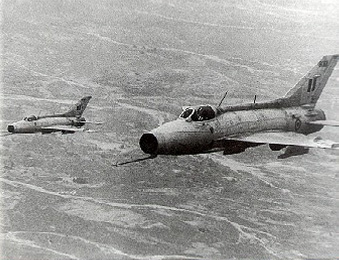 Within the first two weeks, the IAF had carried out almost 12,000 sorties over East Pakistan and also provided
Within the first two weeks, the IAF had carried out almost 12,000 sorties over East Pakistan and also provided close air support
In military tactics, close air support (CAS) is defined as air action such as air strikes by fixed or rotary-winged aircraft against hostile targets near friendly forces and require detailed integration of each air mission with fire and moveme ...
to the advancing Indian Army.air superiority
Aerial supremacy (also air superiority) is the degree to which a side in a conflict holds control of air power over opposing forces. There are levels of control of the air in aerial warfare. Control of the air is the aerial equivalent of c ...
on the eastern front, the ordnance factories, runways, and other vital areas of East Pakistan were severely damaged. By the time Pakistani forces surrendered, the IAF destroyed 94 PAF Aircraft
The IAF was able to conduct a wide range of missions – troop support; air combat; deep penetration strikes; para-dropping behind enemy lines; feints to draw enemy fighters away from the actual target; bombing; and reconnaissance. In contrast, the Pakistan Air Force, which was solely focused on air combat, was blown out of the subcontinent's skies within the first week of the war. Those PAF aircraft that survived took refuge at Iranian air bases or in concrete bunkers, refusing to offer a fight. Hostilities officially ended at 14:30 GMT on 17 December, after the fall of Dacca on 15 December. India claimed large gains of territory in West Pakistan (although pre-war boundaries were recognised after the war), and the independence of Pakistan's East wing as Bangladesh was confirmed. The IAF had flown over 16,000 sorties[''The Encyclopedia of 20th Century Air Warfare'', edited by Chris Bishop (Amber publishing 1997, republished 2004 pages 384–387 )] Towards the end of the war, IAF's transport planes dropped leaflets over Dhaka urging the Pakistani forces to surrender, demoralising Pakistani troops in East Pakistan.
Incidents before Kargil (1984–1988)
In 1984, India launched Operation Meghdoot to capture the Siachen Glacier in the contested Kashmir
Kashmir () is the northernmost geographical region of the Indian subcontinent. Until the mid-19th century, the term "Kashmir" denoted only the Kashmir Valley between the Great Himalayas and the Pir Panjal Range. Today, the term encompas ...
region. In Op Meghdoot, IAF's Mi-8, Chetak
Chetak or Cetak is the name given in traditional literature to the horse ridden by Maharana Pratap at the Battle of Haldighati, fought on 18 June 1576 at Haldighati, in the Aravalli Mountains of Rajasthan, in western India.
The story
Hi ...
and Cheetah helicopters airlifted hundreds of Indian troops to Siachen. Launched on 13 April 1984, this military operation was unique because of Siachen's inhospitable terrain and climate. The military action was successful, given the fact that under a previous agreement, neither Pakistan nor India had stationed any personnel in the area. With India's successful Operation Meghdoot, it gained control of the Siachen Glacier. India has established control over all of the long Siachen Glacier and all of its tributary glaciers, as well as the three main passes of the Saltoro Ridge immediately west of the glacier— Sia La, Bilafond La
Bilafond La (meaning "Pass of the Butterflies" in Balti language, also known as the Saltoro Pass, is a mountain pass situated on Saltoro Ridge, sitting immediately west of the vast Siachen Glacier, some directly north of map point NJ 980420 wh ...
, and Gyong La. Pakistan controls the glacial valleys immediately west of the Saltoro Ridge.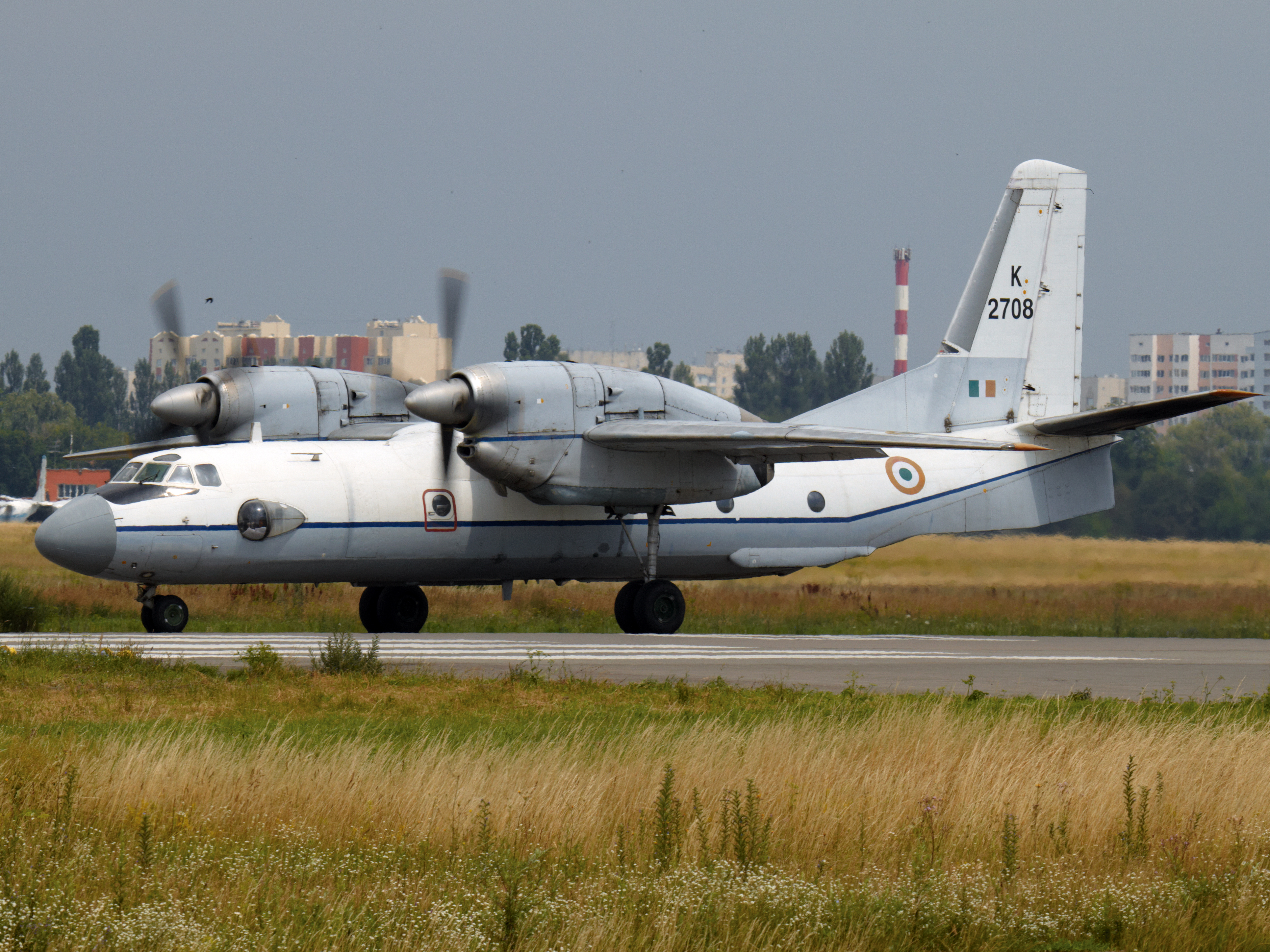 Following the inability to negotiate an end to the Sri Lankan Civil War, and to provide humanitarian aid through an unarmed convoy of ships,
Following the inability to negotiate an end to the Sri Lankan Civil War, and to provide humanitarian aid through an unarmed convoy of ships,[ Five An-32s escorted by four ]Mirage 2000
The Dassault Mirage 2000 is a French multirole, single-engine, fourth-generation jet fighter manufactured by Dassault Aviation. It was designed in the late 1970s as a lightweight fighter to replace the Mirage III for the French Air Force (''Arm ...
of 7 Sqn AF, 'The Battleaxes', carried out the supply drop which faced no opposition from the Sri Lankan Armed Forces. Another Mirage 2000
The Dassault Mirage 2000 is a French multirole, single-engine, fourth-generation jet fighter manufactured by Dassault Aviation. It was designed in the late 1970s as a lightweight fighter to replace the Mirage III for the French Air Force (''Arm ...
orbited 150 km away, acting as an airborne relay of messages to the entire fleet since they would be outside radio range once they descended to low levels. The Mirage 2000 escort formation was led by Wg Cdr Ajit Bhavnani, with Sqn Ldrs Bakshi, NA Moitra and JS Panesar as his team members and Sqn Ldr KG Bewoor as the relay pilot.[ India insisted that it was acting only on humanitarian grounds.]Indian Peace Keeping Force
Indian Peace Keeping Force (IPKF) was the Indian military contingent performing a peacekeeping operation in Sri Lanka between 1987 and 1990. It was formed under the mandate of the 1987 Indo-Sri Lankan Accord that aimed to end the Sri Lankan ...
(IPKF) in northern and eastern Sri Lanka
Sri Lanka (, ; si, ශ්රී ලංකා, Śrī Laṅkā, translit-std=ISO (); ta, இலங்கை, Ilaṅkai, translit-std=ISO ()), formerly known as Ceylon and officially the Democratic Socialist Republic of Sri Lanka, is an ...
in Operation Pawan. About 70,000 sorties were flown by the IAF's transport and helicopter force in support of nearly 100,000 troops and paramilitary forces without a single aircraft lost or mission aborted.Gayoom
Maumoon Abdul Gayoom (; dv, މައުމޫން ޢަބްދުލް ޤައްޔޫމް; born 29 December 1937) is a Maldivian politician and an Islamic scholar who served as the President of Maldives from 1978 to 2008. After serving as Minister of Tran ...
's request for military help against a mercenary invasion in Operation Cactus
Operation or Operations may refer to:
Arts, entertainment and media
* ''Operation'' (game), a battery-operated board game that challenges dexterity
* Operation (music), a term used in musical set theory
* ''Operations'' (magazine), Multi-Man ...
. The IL-76s of No. 44 Squadron landed at Hulhule at 0030 hours and the Indian paratroopers secured the airfield and restored Government rule at Male within hours.
Kargil War (1999)
On 11 May 1999, the Indian Air Force was called in to provide close air support to the Indian Army at the height of the ongoing Kargil conflict with the use of helicopters.Operation Safed Sagar
Operation Safed Sagar ( hi, ऑपरेशन सफेद सागर, lit. "Operation White Ocean") was the code name assigned to the Indian Air Force's role in acting jointly with the Indian Army during the 1999 Kargil war that was aim ...
.[ The first strikes were launched on 26 May, when the Indian Air Force struck infiltrator positions with fighter aircraft and ]helicopter gunship
A gunship is a military aircraft armed with heavy aircraft guns, primarily intended for attacking ground targets either as airstrike or as close air support.
In modern usage the term "gunship" refers to fixed-wing aircraft having laterally-mo ...
s.MiG-29
The Mikoyan MiG-29 (russian: Микоян МиГ-29; NATO reporting name: Fulcrum) is a twin-engine fighter aircraft designed in the Soviet Union. Developed by the Mikoyan design bureau as an air superiority fighter during the 1970s, the Mi ...
s providing fighter cover.MiG-29
The Mikoyan MiG-29 (russian: Микоян МиГ-29; NATO reporting name: Fulcrum) is a twin-engine fighter aircraft designed in the Soviet Union. Developed by the Mikoyan design bureau as an air superiority fighter during the 1970s, the Mi ...
fighters in vast numbers to keep check on Pakistani military movements across the border. Srinagar
Srinagar (English: , ) is the largest city and the summer capital of Jammu and Kashmir, India. It lies in the Kashmir Valley on the banks of the Jhelum River, a tributary of the Indus, and Dal and Anchar lakes. The city is known for its natu ...
Airport was at this time closed to civilian air-traffic and dedicated to the Indian Air Force.[
On 27 May, the Indian Air Force suffered its first fatality when it lost a MiG-21 and a MiG-27 in quick succession.]Man-portable air-defence systems
Man-portable air-defense systems (MANPADS or MPADS) are portable surface-to-air missiles. They are guided weapons and are a threat to low-flying aircraft, especially helicopters.
Overview
MANPADS were developed in the 1950s to provide military ...
(MANPAD). On 30 May, the Mirage 2000
The Dassault Mirage 2000 is a French multirole, single-engine, fourth-generation jet fighter manufactured by Dassault Aviation. It was designed in the late 1970s as a lightweight fighter to replace the Mirage III for the French Air Force (''Arm ...
s were introduced in offensive capability, as they were deemed better in performance under the high-altitude conditions of the conflict zone. Mirage 2000s were not only better equipped to counter the MANPAD threat compared to the MiGs, but also gave IAF the ability to carry out aerial raids at night. The MiG-29s were used extensively to provide fighter escort to the Mirage 2000.Tiger Hill
The tiger (''Panthera tigris'') is the largest living cat species and a member of the genus '' Panthera''. It is most recognisable for its dark vertical stripes on orange fur with a white underside. An apex predator, it primarily preys on u ...
and paved the way for their early recapture.[ At the height of the conflict, the IAF was conducting over forty sorties daily over the Kargil region.]
Post Kargil incidents (1999–present)
Since the late 1990s, the Indian Air Force has been modernising its fleet to counter challenges in the new century. The fleet size of the IAF has decreased to 33 squadrons during this period because of the retirement of older aircraft. Still, India maintains the fourth largest air force in the world. The IAF plans to raise its strength to 42 squadrons. Self-reliance is the main aim that is being pursued by the defence research and manufacturing agencies.
On 10 August 1999, IAF MiG-21s intercepted a Pakistan Navy
ur, ہمارے لیے اللّٰہ کافی ہے اور وہ بہترین کارساز ہے۔ English language, English: Allah is Sufficient for us - and what an excellent (reliable) Trustee (of affairs) is He!(''Quran, Qur'an, Al Imran, 3:173' ...
Breguet Atlantique which was flying over Sir Creek, a disputed territory. The aircraft was shot down killing all 16 Pakistani Navy personnel on board. India claimed that the Atlantic was on a mission to gather information on IAF air defence, a charge emphatically rejected by Pakistan which argued that the unarmed aircraft was on a training mission.
On 2 August 2002, the Indian Air Force bombed Pakistani posts along the Line of Control
The Line of Control (LoC) is a military control line between the Indian and Pakistanicontrolled parts of the former princely state of Jammu and Kashmir—a line which does not constitute a legally recognized international boundary, but serve ...
in the Kel sector, following inputs about Pakistani military buildup near the sector.
On 20 August 2013, the Indian Air Force created a world record by performing the highest landing of a C-130J
The Lockheed Martin C-130J Super Hercules is a four-engine turboprop military transport aircraft. The C-130J is a comprehensive update of the Lockheed C-130 Hercules, with new engines, flight deck, and other systems.
The C-130J is the newest v ...
at the Daulat Beg Oldi airstrip in Ladakh at the height of . The medium-lift aircraft will be used to deliver troops, supplies and improve communication networks. The aircraft belonged to the ''Veiled Vipers'' squadron based at Hindon Air Force Station.
On 13 July 2014, two MiG-21s were sent from Jodhpur Air Base to investigate a Turkish Airlines aircraft over Jaisalmer when it repeated an identification code, provided by another commercial passenger plane that had already entered Indian airspace before it. The flights were on their way to Mumbai and Delhi, and the planes were later allowed to proceed after their credentials were verified.
2019 Balakot airstrike
Following heightened tensions between India and Pakistan after the 2019 Pulwama attack
The 2019 Pulwama attack occurred on 14 February 2019, when a convoy of vehicles carrying Indian security personnel on the Jammu–Srinagar National Highway was attacked by a vehicle-borne suicide bomber at Lethapora in the Pulwama district o ...
that was carried out by Jaish-e-Mohammed (JeM) which killed forty servicemen of the Central Reserve Police Force, a group of twelve Mirage 2000
The Dassault Mirage 2000 is a French multirole, single-engine, fourth-generation jet fighter manufactured by Dassault Aviation. It was designed in the late 1970s as a lightweight fighter to replace the Mirage III for the French Air Force (''Arm ...
fighter planes from the Indian Air Force carried out air strikes on alleged JeM bases in Chakothi and Muzaffarabad in the Pakistan-administered Kashmir. Furthermore, the Mirage 2000s targeted an alleged JeM training camp in Balakot, a town in the Pakistani province of Khyber Pakhtunkhwa. Pakistan claimed that the Indian aircraft had only dropped bombs in the forest area demolishing pine trees near the Jaba village which is away from Balakot
and Indian officials claimed to bomb and kill a large number of terrorists in the airstrike.
2019 India–Pakistan standoff
On 27 February 2019, in retaliation for the IAF bombing of an alleged terrorist hideout in Balakot, a group of PAF Mirage-5 and JF-17 fighters allegedly conducted an airstrike against certain ground targets across the Line of Control
The Line of Control (LoC) is a military control line between the Indian and Pakistanicontrolled parts of the former princely state of Jammu and Kashmir—a line which does not constitute a legally recognized international boundary, but serve ...
. They were intercepted by a group of IAF fighters consisting of Su-30MKI and MiG-21 jets. An ensuing dogfight began. According to India, one PAF F-16 was shot down by an IAF MiG-21 piloted by Abhinandan Varthaman, while Pakistan denied use of F-16s in the operation. According to Pakistan, a MiG-21 and a Su30MKI were shot down, while India claims that only the MiG-21 was shot down. Indian officials rejected Pakistani claims of shooting down an Su-30MKI stating that its impossible to hide an aircraft crash as of now in populated area like Kashmir and said its a coverup for the loss of F16. While the downed MiG-21's pilot had ejected successfully, he landed in Pakistan-administered Kashmir, and was captured by the Pakistan military. Before his capture he was assaulted by a few locals. After a couple of days of captivity, the captured pilot was released by Pakistan per Third Geneva convention obligations. While Pakistan denied involvement of any of its F-16 aircraft in the strike, the IAF presented remnants of AMRAAM missiles that are only carried by the F-16s within the PAF as proof of their involvement. Unnamed US officials told ''Foreign Policy
A State (polity), state's foreign policy or external policy (as opposed to internal or domestic policy) is its objectives and activities in relation to its interactions with other states, unions, and other political entities, whether bilaterall ...
'' magazine in April 2019 that an audit didn't find any Pakistani F-16s missing. However, this was not confirmed by the United States, which cited it as bilateral matter between US and Pakistan.
Structure
The President of India is the Supreme Commander of all Indian armed forces and by virtue of that fact is the national Commander-in-chief of the Air Force. The Chief of the Air Staff with the rank of Air chief marshal
Air chief marshal (Air Chf Mshl or ACM) is a high-ranking air officer originating from the Royal Air Force. The rank is used by air forces of many countries that have historical British influence. An air chief marshal is equivalent to an Admir ...
is the Commander
In January 2002, the government conferred the rank of Marshal of the Indian Air Force on Arjan Singh making him the first and only '' Five-star'' officer with the Indian Air Force and ceremonial chief of the air force.
Commands
The Indian Air Force is divided into five operational and two functional commands
Command may refer to:
Computing
* Command (computing), a statement in a computer language
* COMMAND.COM, the default operating system shell and command-line interpreter for DOS
* Command key, a modifier key on Apple Macintosh computer keyboards
* ...
. Each Command is headed by an Air Officer Commanding-in-Chief with the rank of Air Marshal. The purpose of an operational command is to conduct military operations using aircraft within its area of responsibility, whereas the responsibility of functional commands is to maintain combat readiness. Aside from the Training Command at Bangalore, the primary flight training is done at the Air Force Academy (located in Hyderabad), followed by operational training at various other schools. Advanced officer training for command positions is also conducted at the Defence Services Staff College; specialised advanced flight training schools are located at Bidar, Karnataka and Hakimpet, Telangana (also the location for helicopter training). Technical schools are found at a number of other locations.
 ''Note: + = Functional Command''
''Note: + = Functional Command''
Wings
A wing is a formation intermediate between a command and a squadron. It generally consists of two or three IAF squadrons and helicopter units, along with forward base support units (FBSU). FBSUs do not have or host any squadrons or helicopter units but act as transit airbases for routine operations. In times of war, they can become fully fledged air bases playing host to various squadrons. In all, about 47 wings and 19 FBSUs make up the IAF. Wings are typically commanded by an air commodore.
Stations
Within each operational command are anywhere from nine to sixteen bases or stations. Smaller than wings, but similarly organised, stations are static units commanded by a group captain
Group captain is a senior commissioned rank in the Royal Air Force, where it originated, as well as the air forces of many countries that have historical British influence. It is sometimes used as the English translation of an equivalent rank i ...
.
Squadrons and units
Squadrons are the field units and formations attached to static locations. Thus, a flying squadron or unit is a sub-unit of an air force station which carries out the primary task of the IAF. A fighter squadron consists of 18 aircraft; all fighter squadrons are headed by a commanding officer
The commanding officer (CO) or sometimes, if the incumbent is a general officer, commanding general (CG), is the officer in command of a military unit. The commanding officer has ultimate authority over the unit, and is usually given wide latitu ...
with the rank of wing commander. Some transport squadrons and helicopter units are headed by a commanding officer with the rank of group captain
Group captain is a senior commissioned rank in the Royal Air Force, where it originated, as well as the air forces of many countries that have historical British influence. It is sometimes used as the English translation of an equivalent rank i ...
.
Flights
Flights are sub-divisions of squadrons, commanded by a squadron leader. Each flight consists of two sections.
Sections
The smallest unit is the section, led by a flight lieutenant
Flight lieutenant is a junior commissioned rank in air forces that use the Royal Air Force (RAF) system of ranks, especially in Commonwealth countries. It has a NATO rank code of OF-2. Flight lieutenant is abbreviated as Flt Lt in the India ...
. Each section consists of three aircraft.
Within this formation structure, IAF has several service branches for day-to-day operations. They are:
Garud Commando Force
The Garud commandos are the special forces of the Indian Air Force (IAF). Their tasks include counter-terrorism, hostage rescue, providing security to IAF's vulnerably located assets and various air force-specific special operations. First conceived in 2002, this unit was officially established on February 6, 2004.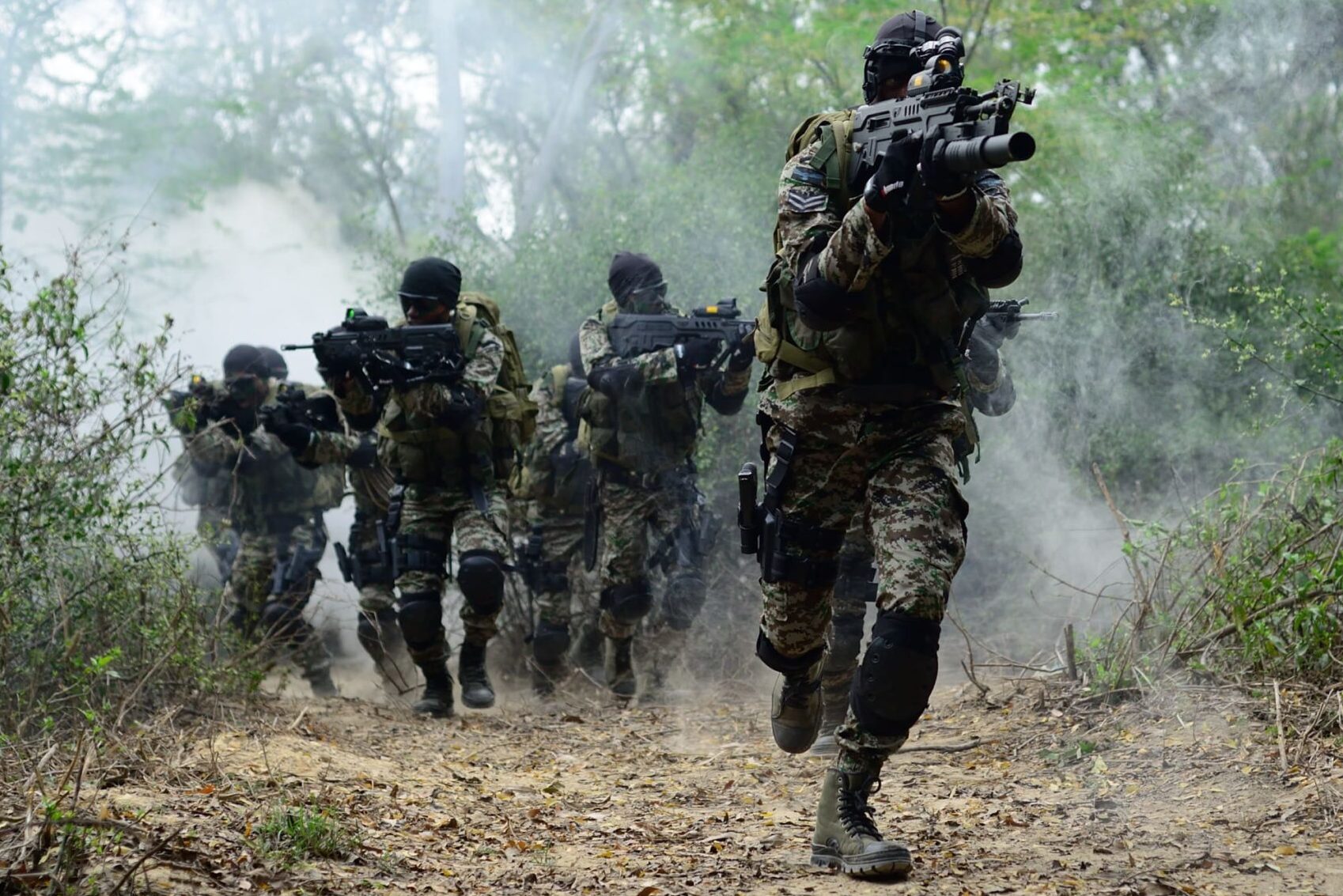 All Garuds are volunteers who are imparted a 52-week basic training, which includes a three-month probation followed by special operations training, basic airborne training and other warfare and survival skills. The last phase of basic training sees Garuds been deployed to get combat experience. Advanced training follows, which includes specialised weapons training.
All Garuds are volunteers who are imparted a 52-week basic training, which includes a three-month probation followed by special operations training, basic airborne training and other warfare and survival skills. The last phase of basic training sees Garuds been deployed to get combat experience. Advanced training follows, which includes specialised weapons training.Defence Security Corps
The Defence Security Corps (DSC), is a corps of the Indian Army responsible for providing security cover to the defence installations of the three services (Army, Navy, Air Force) and other sensitive installations. The DSC troops are sanctioned ...
even though some critical assets are protected by the Garuds.
Integrated Space Cell
An Integrated Space Cell, which will be jointly operated by all the three services of the Indian armed forces, the civilian Department of Space and the Indian Space Research Organisation (ISRO) has been set up to utilise more effectively the country's space-based assets for military purposes.[ ] the CARTOSAT-2, CARTOSAT-2A and CARTOSAT-2B which carries a panchromatic camera which has a resolution of (black and white only).
Display teams
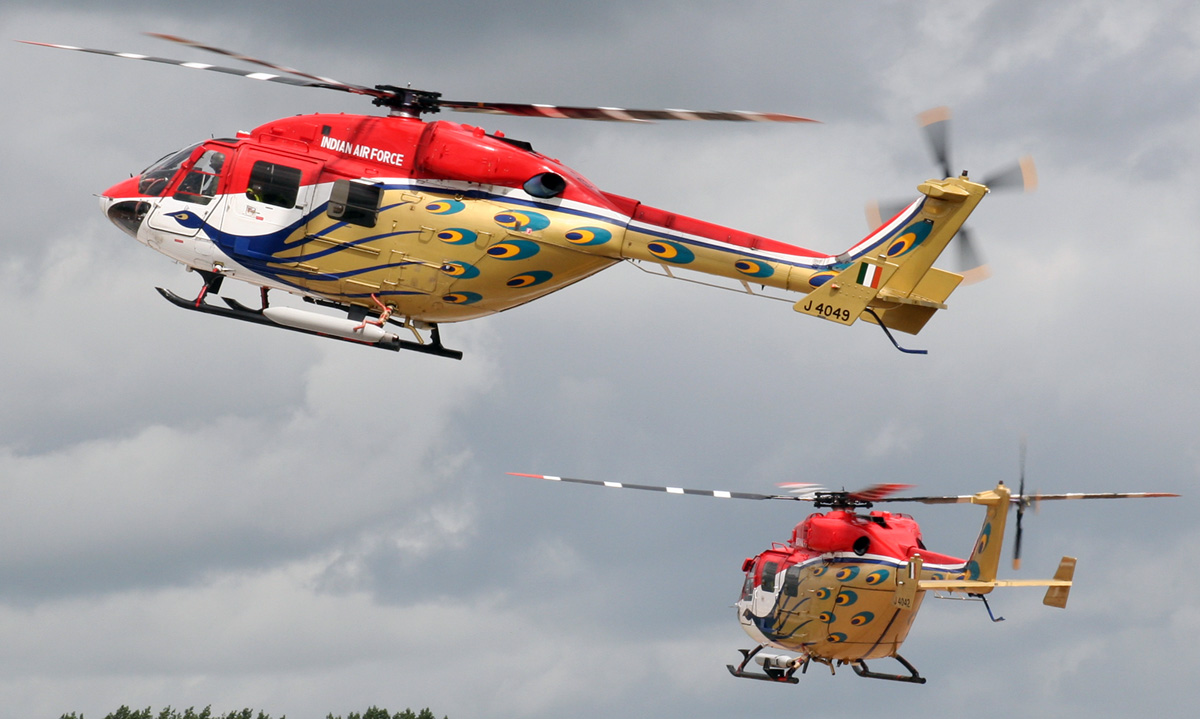 ''The Surya Kiran Aerobatic Team (SKAT)'' (''Surya Kiran'' is Sanskrit for ''Sun Rays'') is an aerobatics demonstration team of the Indian Air Force. They were formed in 1996 and are successors to the ''Thunderbolts''.
''The Surya Kiran Aerobatic Team (SKAT)'' (''Surya Kiran'' is Sanskrit for ''Sun Rays'') is an aerobatics demonstration team of the Indian Air Force. They were formed in 1996 and are successors to the ''Thunderbolts''.Sulur Air Force Station
Sulur Air Force Station is an air base of the Indian Air Force located at Sulur near Coimbatore, Tamil Nadu and is India's second largest air base after Hindon AFS. It is the base which is responsible for protection of India's sea area. It is ...
, Coimbatore
Coimbatore, also spelt as Koyamputhur (), sometimes shortened as Kovai (), is one of the major metropolitan cities in the Indian state of Tamil Nadu. It is located on the banks of the Noyyal River and surrounded by the Western Ghats. Coimbato ...
.
Personnel
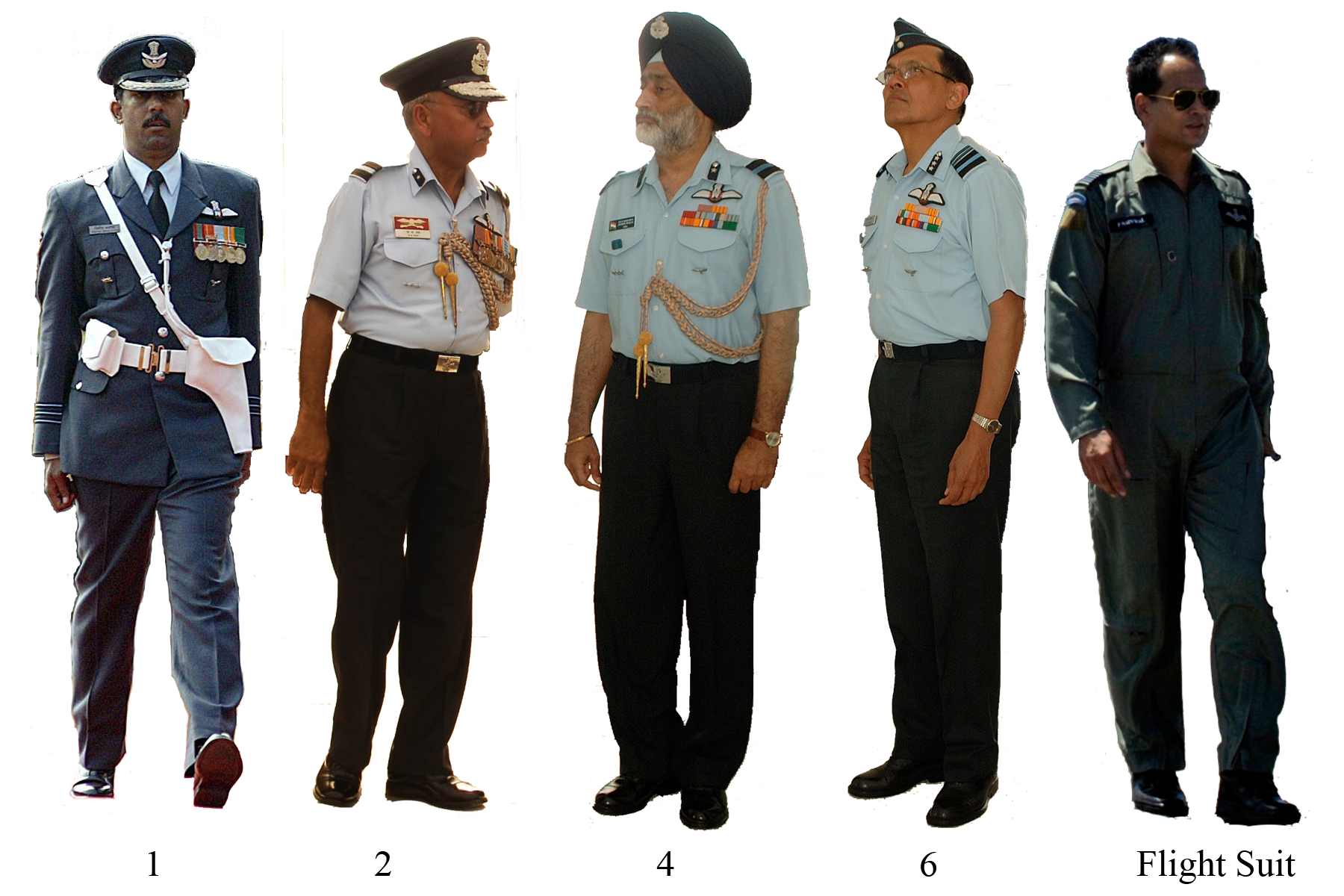
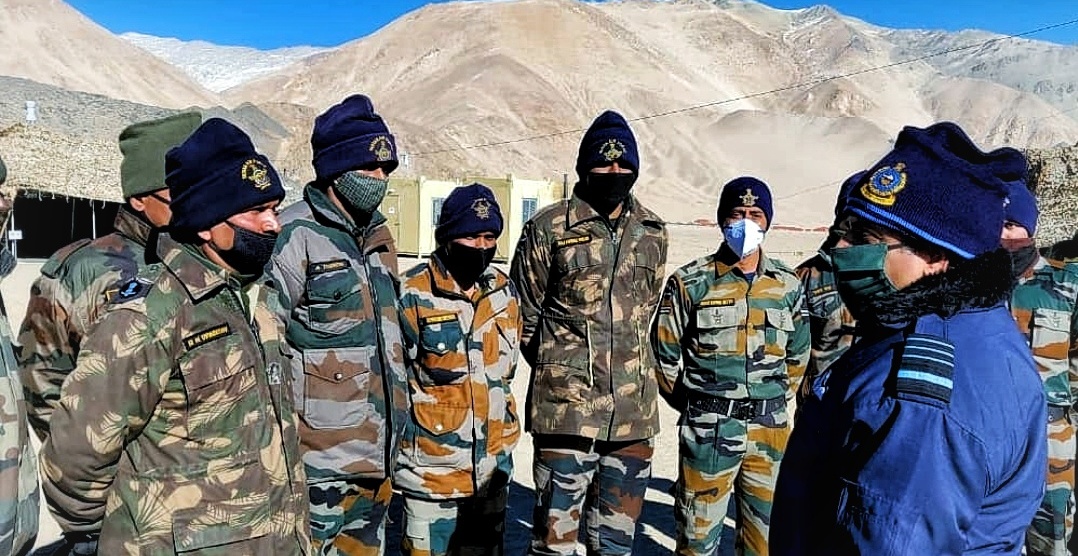
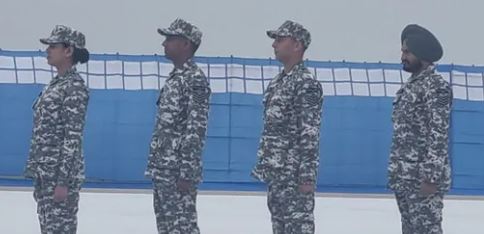
 Over the years reliable sources provided notably divergent estimates of the personnel strength of the Indian Air Force after analysing open-source intelligence. In 2006, Anthony Cordesman estimated that strength to be 170,000 in the International Institute for Strategic Studies (IISS) publication ''"The Asian Conventional Military Balance in 2006"''.
Over the years reliable sources provided notably divergent estimates of the personnel strength of the Indian Air Force after analysing open-source intelligence. In 2006, Anthony Cordesman estimated that strength to be 170,000 in the International Institute for Strategic Studies (IISS) publication ''"The Asian Conventional Military Balance in 2006"''.
Rank structure
The rank structure of the Indian Air Force is based on that of the Royal Air Force. The highest rank attainable in the IAF is Marshal of the Indian Air Force, conferred by the President of India after exceptional service during wartime. MIAF Arjan Singh is the only officer to have achieved this rank. The head of the Indian Air Force is the Chief of the Air Staff, who holds the rank of Air Chief Marshal
Air chief marshal (Air Chf Mshl or ACM) is a high-ranking air officer originating from the Royal Air Force. The rank is used by air forces of many countries that have historical British influence. An air chief marshal is equivalent to an Admir ...
.
Officers
Anyone holding Indian citizenship can apply to be an officer in the Air Force as long as they satisfy the eligibility criteria. There are four entry points to become an officer. Male applicants, who are between the ages of 16 and 19 and have passed high school graduation, can apply at the ''Intermediate'' level. Men and women applicants, who have graduated from college (three-year course) and are between the ages of 18 and 28, can apply at the ''Graduate'' level entry. Graduates of engineering colleges can apply at the ''Engineer'' level if they are between the ages of 18 and 28 years. The age limit for the flying and ground duty branch is 23 years of age and for technical branch is 28 years of age. After completing a master's degree, men and women between the ages of 18 and 28 years can apply at the ''Post Graduate'' level. Post graduate applicants do not qualify for the flying branch. For the technical branch the age limit is 28 years and for the ground duty branch it is 25. At the time of application, all applicants below 25 years of age must be single. The IAF selects candidates for officer training from these applicants. After completion of training, a candidate is commissioned as a Flying Officer.
In May 2022 Abhilasha Barak
Abhilasha Barak is an officer in the Indian Army from Haryana. She did her training from Officers Training Academy, Chennai.She is known for becoming the first woman combat aviator in the Indian Army in 2022. She completed her one year of training ...
became the first ever woman combat aviator in the Indian Army
Airmen
 The duty of an airman is to make sure that all the air and ground operations run smoothly. From operating Air Defence systems to fitting missiles, they are involved in all activities of an air base and give support to various technical and non-technical jobs.
The duty of an airman is to make sure that all the air and ground operations run smoothly. From operating Air Defence systems to fitting missiles, they are involved in all activities of an air base and give support to various technical and non-technical jobs.Flight Lieutenant
Flight lieutenant is a junior commissioned rank in air forces that use the Royal Air Force (RAF) system of ranks, especially in Commonwealth countries. It has a NATO rank code of OF-2. Flight lieutenant is abbreviated as Flt Lt in the India ...
before retiring from the service.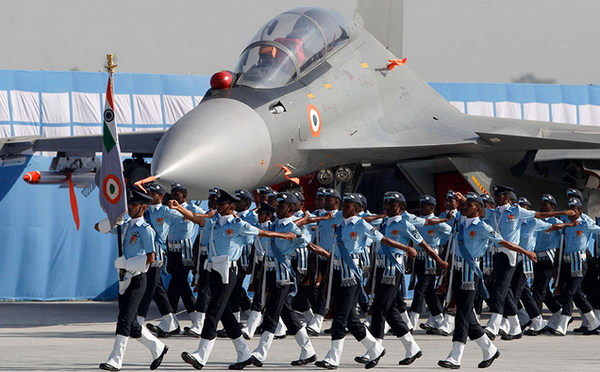
Honorary officers
Sachin Tendulkar was the first sportsperson and the first civilian without an aviation background to be awarded the honorary rank of group captain
Group captain is a senior commissioned rank in the Royal Air Force, where it originated, as well as the air forces of many countries that have historical British influence. It is sometimes used as the English translation of an equivalent rank i ...
by the Indian Air Force.
Non combatants enrolled and civilians
Non combatants enrolled (NCs(E)) were established in British India as personal assistants to the officer class, and are equivalent to the ''orderly'' or ''sahayak'' of the Indian Army.
Almost all the commands have some percentage of civilian strength which are central government employees. These are regular ranks which are prevalent in ministries. They are usually not posted outside their stations and are employed in administrative and non-technical work.
Training and education
The Indian Armed Forces have set up numerous military academies across India for training its personnel, such as the National Defence Academy (NDA). Besides the tri-service institutions, the Indian Air Force has a Training Command and several training establishments. While technical and other support staff are trained at various Ground Training Schools, the pilots are trained at the Air Force Academy, Dundigul (located in Hyderabad). The Pilot Training Establishment at Allahabad
Allahabad (), officially known as Prayagraj, also known as Ilahabad, is a metropolis in the Indian state of Uttar Pradesh.The other five cities were: Agra, Kanpur (Cawnpore), Lucknow, Meerut, and Varanasi (Benares). It is the administrat ...
, the Air Force Administrative College
Air Force Administrative College (AFAC), located at Coimbatore, is one of the oldest training institutes of the Indian Air Force (IAF).
Courses offered
College conducts following courses for in service officers:
* Basic Air Typing Staff Cour ...
at Coimbatore
Coimbatore, also spelt as Koyamputhur (), sometimes shortened as Kovai (), is one of the major metropolitan cities in the Indian state of Tamil Nadu. It is located on the banks of the Noyyal River and surrounded by the Western Ghats. Coimbato ...
, the Institute of Aerospace Medicine at Bangalore, the Air Force Technical College, Bangalore
Air Force Technical College is in Bangalore
Bangalore (), officially Bengaluru (), is the capital and largest city of the Indian state of Karnataka. It has a population of more than and a metropolitan population of around , makin ...
at Jalahalli, the Tactics and Air Combat and Defence Establishment Tactics and Air Combat Development Establishment or TACDE is an Indian Air Force unit for training aerial combat to its top one percent fighter pilots. TACDE is based in Gwalior. It was conferred Presidential standard in 2009. The institution evolve ...
at Gwalior, and the Paratrooper's Training School at Agra are some of the other training establishments of the IAF.
Aircraft inventory
The Indian Air Force has aircraft and equipment of Russian (erstwhile Soviet Union), British, French, Israeli, US and Indian origins with Russian aircraft dominating its inventory. HAL produces some of the Russian and British aircraft in India under licence. The exact number of aircraft in service with the Indian Air Force cannot be determined with precision from open sources. Various reliable sources provide notably divergent estimates for a variety of high-visibility aircraft. Flight International estimates there to be around 1,750 aircraft in service with the IAF,
Multi-role fighters and strike aircraft
 * Dassault Rafale: the latest addition to India's aircraft arsenal; India has signed a deal for 36 Dassault Rafale
* Dassault Rafale: the latest addition to India's aircraft arsenal; India has signed a deal for 36 Dassault Rafale multirole
A multirole combat aircraft (MRCA) is a combat aircraft intended to perform different roles in combat. These roles can include air to air combat, air support,
aerial bombing, reconnaissance, electronic warfare, and suppression of air defens ...
fighter aircraft
Fighter aircraft are fixed-wing military aircraft designed primarily for air-to-air combat. In military conflict, the role of fighter aircraft is to establish air superiority of the battlespace. Domination of the airspace above a battlefield ...
. As of June 2022, 36 Rafale fighters are in service with the Indian Air Force.
* Sukhoi Su-30MKI: the IAF's primary air superiority fighter, with additional air-to-ground (strike) mission capability, is the Sukhoi Su-30MKI. 261 Su-30MKIs are in service.
* Mikoyan MiG-29: the MiG-29, known as ''Baaz'' ( Hindi for Hawk), is a dedicated air superiority fighter, constituting the IAF's second line of defence after the Su-30MKI. There are 69 MiG-29s in service, all of which have been recently upgraded to the MiG-29UPG standard, after the decision was made in 2016 to upgrade the remaining 21 MiG-29s to the UPG standard.HAL Tejas
The HAL Tejas is an Indian, single engine, delta wing, light multirole fighter designed by the Aeronautical Development Agency (ADA) in collaboration with Aircraft Research and Design Centre (ARDC) of Hindustan Aeronautics Limited (HAL) for t ...
: IAF MiG-21s are to be replaced by domestically built HAL Tejas.No. 18 Squadron IAF
No. 18 Squadron (''Flying Bullets''), is an air-defence unit of the Indian Air Force, flying from Sulur Air Force Station. The squadron is equipped with indigenous HAL Tejas MK1 in FOC configuration .
The squadron was resurrected on 1 April 20 ...
"Flying Bullets" on 27 May 2020. Initially stationed at Bangalore, the first squadron was then to be transferred to its home base in Sulur, Tamil Nadu.SEPECAT Jaguar
The SEPECAT Jaguar is an Anglo-French jet attack aircraft originally used by the British Royal Air Force and the French Air Force in the close air support and nuclear strike role. It is still in service with the Indian Air Force.
Originall ...
: the Jaguar, known as the ''Shamsher'', serves as the IAF's primary ground attack force. The IAF currently operates 139 Jaguars. The first batch of DARIN-1 Jaguars are now going through a DARIN-3 upgrade being equipped with EL/M-2052 AESA radars, and an improved jamming suite plus new avionics. These aircraft are scheduled to be phased out by 2030.Mikoyan-Gurevich MiG-21
The Mikoyan-Gurevich MiG-21 (russian: Микоян и Гуревич МиГ-21; NATO reporting name: Fishbed) is a supersonic jet aircraft, jet fighter aircraft, fighter and interceptor aircraft, designed by the Mikoyan, Mikoyan-Gurevich OKB, De ...
: the MiG-21 serves as an interceptor aircraft in the IAF, which phased out most of its MiG-21s and planned to keep only the 125 aircraft upgraded to the MiG-21 Bison standard.
Airborne early warning and control system
 The IAF is currently training crews in the operation of indigenously developed DRDO AEW&CS, conducting the training on Embraer ERJ 145 aircraft. The IAF also operates the EL/W-2090 Phalcon AEW&C incorporated in a Beriev A-50 platform. A total of three such systems are currently in service, with two further potential orders. The two additional Phalcons are currently in negotiation to settle price differences between Russia and India. India is also going ahead with Project India, an in-house AWACS program to develop and deliver six Phalcon-class AWACS, based on DRDO work on the smaller AEW&CS.
The IAF is currently training crews in the operation of indigenously developed DRDO AEW&CS, conducting the training on Embraer ERJ 145 aircraft. The IAF also operates the EL/W-2090 Phalcon AEW&C incorporated in a Beriev A-50 platform. A total of three such systems are currently in service, with two further potential orders. The two additional Phalcons are currently in negotiation to settle price differences between Russia and India. India is also going ahead with Project India, an in-house AWACS program to develop and deliver six Phalcon-class AWACS, based on DRDO work on the smaller AEW&CS.
Aerial refuelling
 The IAF currently operates six
The IAF currently operates six Ilyushin Il-78
The Ilyushin Il-78 (russian: Илью́шин Ил-78; NATO reporting name Midas) is a Soviet/Russian four-engined aerial refueling tanker based on the Il-76 strategic airlifter.
Design and development
The Soviet Union's first dedicated t ...
MKIs in the aerial refueling
Aerial refueling, also referred to as air refueling, in-flight refueling (IFR), air-to-air refueling (AAR), and tanking, is the process of transferring aviation fuel from one aircraft (the tanker) to another (the receiver) while both aircraft a ...
(tanker) role.
Transport aircraft
 For strategic airlift operations, the IAF uses the
For strategic airlift operations, the IAF uses the Ilyushin Il-76
The Ilyushin Il-76 (russian: Илью́шин Ил-76; NATO reporting name: Candid) is a multi-purpose, fixed-wing, four-engine turbofan strategic airlifter designed by the Soviet Union's Ilyushin design bureau. It was first planned as a comm ...
, known as ''Gajraj'' (Hindi for King Elephant) in Indian service. The IAF operated 17 Il-76s in 2010, which are in the process of being replaced by C-17 Globemaster IIIs.C-130J
The Lockheed Martin C-130J Super Hercules is a four-engine turboprop military transport aircraft. The C-130J is a comprehensive update of the Lockheed C-130 Hercules, with new engines, flight deck, and other systems.
The C-130J is the newest v ...
s are used by special forces for combined Army-Air Force operations. India purchased six C-130Js; however, one crashed at Gwalior on 28 March 2014 while on a training mission, killing all 5 on board and destroying the aircraft.Sutlej River
The Sutlej or Satluj River () is the longest of the five rivers that flow through the historic crossroads region of Punjab in northern India and Pakistan. The Sutlej River is also known as ''Satadru''. It is the easternmost tributary of the Ind ...
), serves as a medium transport aircraft in the IAF. The aircraft is also used in bombing roles and paradropping operations.[ The IAF operates 53 Dornier 228 to fulfil its light transport duties. The IAF also operates Boeing 737s and Embraer ECJ-135 Legacy aircraft as VIP transports and passenger airliners for troops. 2 specially modified Boeing 777 are used for both the Indian President and Prime Minister under the call sign ]Air India One
Air India One (also referred to as AI1 AIC1 or INDIA 1) is the air traffic control call sign of any Special Extra Section Flight (SESF) operated by the Indian Air Force (IAF) for the President of India, Vice President of India or Prime Minister ...
.
Trainer aircraft
 The HAL HPT-32 Deepak is IAF's basic flight training aircraft for cadets. The HPT-32 was grounded in July 2009 following a crash that killed two senior flight instructors,
The HAL HPT-32 Deepak is IAF's basic flight training aircraft for cadets. The HPT-32 was grounded in July 2009 following a crash that killed two senior flight instructors,[ and is to be fitted with a parachute recovery system (PRS) to enhance survivability during an emergency in the air and to bring the trainer down safely.][ The HPT-32 is to be phased out soon.][ initially by 75 trainers Pilatus aircraft, and followed by 70 HTT-40 trainers. 36 more HTT-40s to be ordered once fleet is operational. The IAF uses the HAL HJT-16 Kiran mk.I for intermediate flight training of cadets, while the HJT-16 Kiran mk.II provides advanced flight and weapons training. The HAL HJT-16 Kiran Mk.2 is also operated by the ]Surya Kiran
Surya Kiran () is an aerobatics demonstration team of the Indian Air Force. The Surya Kiran Aerobatic Team (SKAT) was formed in 1996 and are a part of the 52nd Squadron of the IAF. The team has since performed numerous demonstrations usually w ...
Aerobatic Team (SKAT) of the IAF. The Kiran is to be replaced by the HAL HJT-36 Sitara. The BAE Hawk Mk 132 serves as an advanced jet trainer in the IAF and is progressively replacing the Kiran Mk.II. The IAF has begun the process of converting the Surya Kiran
Surya Kiran () is an aerobatics demonstration team of the Indian Air Force. The Surya Kiran Aerobatic Team (SKAT) was formed in 1996 and are a part of the 52nd Squadron of the IAF. The team has since performed numerous demonstrations usually w ...
display team to Hawks.
Helicopters
The HAL Dhruv serves primarily as a light utility helicopter in the IAF. In addition to transport and utility roles, newer Dhruvs are also used as attack helicopter
An attack helicopter is an armed helicopter with the primary role of an attack aircraft, with the offensive capability of engaging ground targets such as enemy infantry, military vehicles and fortifications. Due to their heavy armament they ...
s. Four Dhruvs are also operated by the Indian Air Force Sarang Helicopter Display Team. The
The Mil Mi-8
The Mil Mi-8 (russian: Ми-8, NATO reporting name: Hip) is a medium twin-turbine helicopter, originally designed by the Soviet Union in the 1960s and introduced into the Soviet Air Force in 1968.
It is now produced by Russia.
In addition t ...
and the Mil Mi-17
The Mil Mi-17 ( NATO reporting name: Hip) is a Soviet-designed Russian military helicopter family introduced in 1975 (Mi-8M), continuing in production at two factories, in Kazan and Ulan-Ude. It is known as the Mi-8M series in Russian servic ...
, Mi-17 1V and Mi-17V 5 are operated by the IAF for medium lift strategic and utility roles. The Mi-8 is being progressively replaced by the Mi-17 series of helicopters. The IAF has ordered 22 Boeing AH-64E Apache attack helicopters, 68 HAL Light Combat Helicopters (LCH), 35 HAL Rudra attack helicopters, 15 CH-47F Chinook heavy lift helicopters and 150 Mi-17V-5s to replace and augment its existing fleet of Mi-8s, Mi-17s, and Mi-24s.
Unmanned Aerial Vehicles
The IAF currently uses the IAI Searcher II and IAI Heron
The IAI Heron (Machatz-1) is a medium-altitude long-endurance unmanned aerial vehicle (UAV) developed by the Malat
(UAV) division of Israel Aerospace Industries. It is capable of Medium Altitude Long Endurance (MALE) operations of up to 52 h ...
for reconnaissance and surveillance purposes. The IAI Harpy
The IAI Harpy is a loitering munition produced by Israel Aerospace Industries. The Harpy is designed to attack radar systems and is optimised for the suppression of enemy air defences (SEAD) role. It carries a high explosive warhead. The Harpy ha ...
serves as an Unmanned Combat Aerial Vehicle (UCAV) which is designed to attack radar systems.
Land-based missile systems

Surface-To-Air Missiles
The air force operates twenty-five squadrons of S-125 Pechora, six squadrons of 9K33 Osa-AK
The 9K33 ''Osa'' (, literally " wasp"; NATO reporting name SA-8 ''Gecko'') is a highly mobile, low-altitude, short-range tactical surface-to-air missile system developed in the Soviet Union in the 1960s and fielded in 1972. Its export version ...
, ten flights of 9K38 Igla-1, thirteen squadrons of Akash along with eighteen squadron of SPYDER for air defence.MRSAM
Barak 8 ( he, בָּרָק, lit. "Lightning"), also known as LR-SAM or as MR-SAM, is an Indo-Israeli jointly developed surface-to-air missile (SAM) system, designed to defend against any type of airborne threat including aircraft, helicopters, ant ...
.
Ballistic missiles
The IAF currently operates the Prithvi-II short-range ballistic missile (SRBM). The Prithvi-II is an IAF-specific variant of the Prithvi ballistic missile.
Future
The number of aircraft in the IAF has been decreasing from the late 1990s due to the retirement of older aircraft and several crashes. To deal with the depletion of force levels, the IAF has started to modernise its fleet. This includes both the upgrade of existing aircraft, equipment and infrastructure as well as induction of new aircraft and equipment, both indigenous and imported. As new aircraft enter service and numbers recover, the IAF plans to have a fleet of 42 squadrons.
Expected future acquisitions
Single-engined fighter
On 3 January 2017, Minister of Defence Manohar Parrikar addressed a media conference and announced plans for a competition to select a Strategic Partner to deliver "... 200 new single engine fighters to be made in India, which will easily cost around ( USD)$45 million apiece without weaponry" with an expectation that Lockheed Martin
The Lockheed Martin Corporation is an American aerospace, arms, defense, information security, and technology corporation with worldwide interests. It was formed by the merger of Lockheed Corporation with Martin Marietta in March 1995. It ...
(USA) and Saab (Sweden) will pitch the F-16
The General Dynamics F-16 Fighting Falcon is a single-engine Multirole combat aircraft, multirole fighter aircraft originally developed by General Dynamics for the United States Air Force (USAF). Designed as an air superiority day fighter, it ...
Block 70 and Gripen, respectively. An MoD official said that a global tender will be put to market in the first quarter of 2018, with a private company nominated as the strategic partners production agency followed by a two or more year process to evaluate technical and financial bids and conduct trials, before the final government-to-government deal in 2021. This represents 11 squadrons of aircraft plus several 'attrition' aircraft.[Parrikar: India to Kick Off Competition for New Foreign Single-Engine Fighters](_blank)
, Vivek Raghuvanshi, DefenseNews.com, 3 January 2017 India is also planning to set up an assembly line of American Lockheed Martin F-16 Fighting Falcon Block 70 in Bengaluru. It is not yet confirmed whether IAF will induct these aircraft or not.
In 2018, the defence minister Nirmala Sitharaman gave the go ahead to scale up the manufacturing of Tejas at HAL and also to export Tejas. She is quoted saying "We are not ditching the LCA. We have not gone for anything instead of Tejas. We are very confident that Tejas Mark II will be a big leap forward to fulfil the single engine fighter requirement of the forces.". IAF committed to buy 201 Mark-II variant of the Tejas taking the total order of Tejas to 324. The government also scrapped the plan to import single engine fighters leading to reduction in reliance on imports thereby strengthening the domestic defence industry.
The IAF also submitted a request for information to international suppliers for a stealth unmanned combat air vehicle (UCAV).
Current acquisitions
 The IAF has placed orders for 123
The IAF has placed orders for 123 HAL Tejas
The HAL Tejas is an Indian, single engine, delta wing, light multirole fighter designed by the Aeronautical Development Agency (ADA) in collaboration with Aircraft Research and Design Centre (ARDC) of Hindustan Aeronautics Limited (HAL) for t ...
comprising 40 Mark 1, 73 Mark 1A fighters and 10 Mark 1 trainers, 106 basic trainer aircraft HAL HTT-40, 75 Pilatus PC-7MkII basic trainers, 72 HAL HJT-36 Sitara trainers,Airbus A330 MRTT
The Airbus A330 Multi Role Tanker Transport (MRTT) is a European aerial refuelling and military transport aircraft based on the civilian Airbus A330. A total of 16 countries have placed firm orders for approximately 68 aircraft, of which 51 ha ...
, 56 EADS CASA C-295
The CASA C-295 (now Airbus C295) is a medium tactical transport aircraft that was designed and initially manufactured by the Spanish aerospace company CASA.
Work on what would become the C-295 was started during the 1990s as a derivative of t ...
aircraft, IAI Harop
The IAI Harop is a loitering munition developed by the MBT division of Israel Aerospace Industries. Loitering munitions are designed to loiter above the battlefield and attack targets by crashing into them and exploding.
Overview
The IAI Harop ...
UCAVs.TAPAS-BH-201
Tactical Airborne Platform for Aerial Surveillance-Beyond Horizon-201 or TAPAS BH-201 (, ', ''"Heat"'') (formerly referred to as Rustom-II) is a Medium Altitude Long Endurance (MALE) unmanned aerial vehicle (UAV) being developed in India by A ...
MALE UAV's.
DRDO and HAL projects
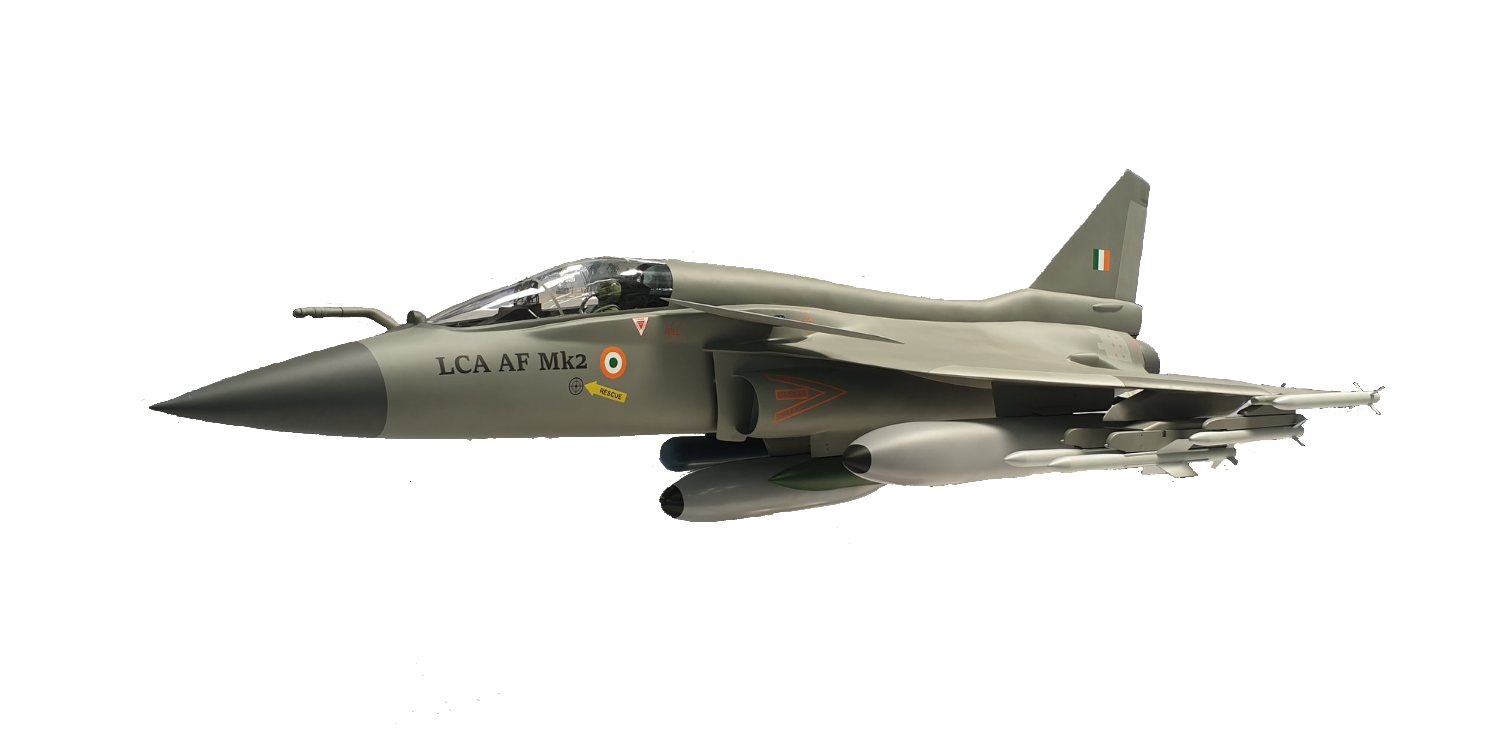

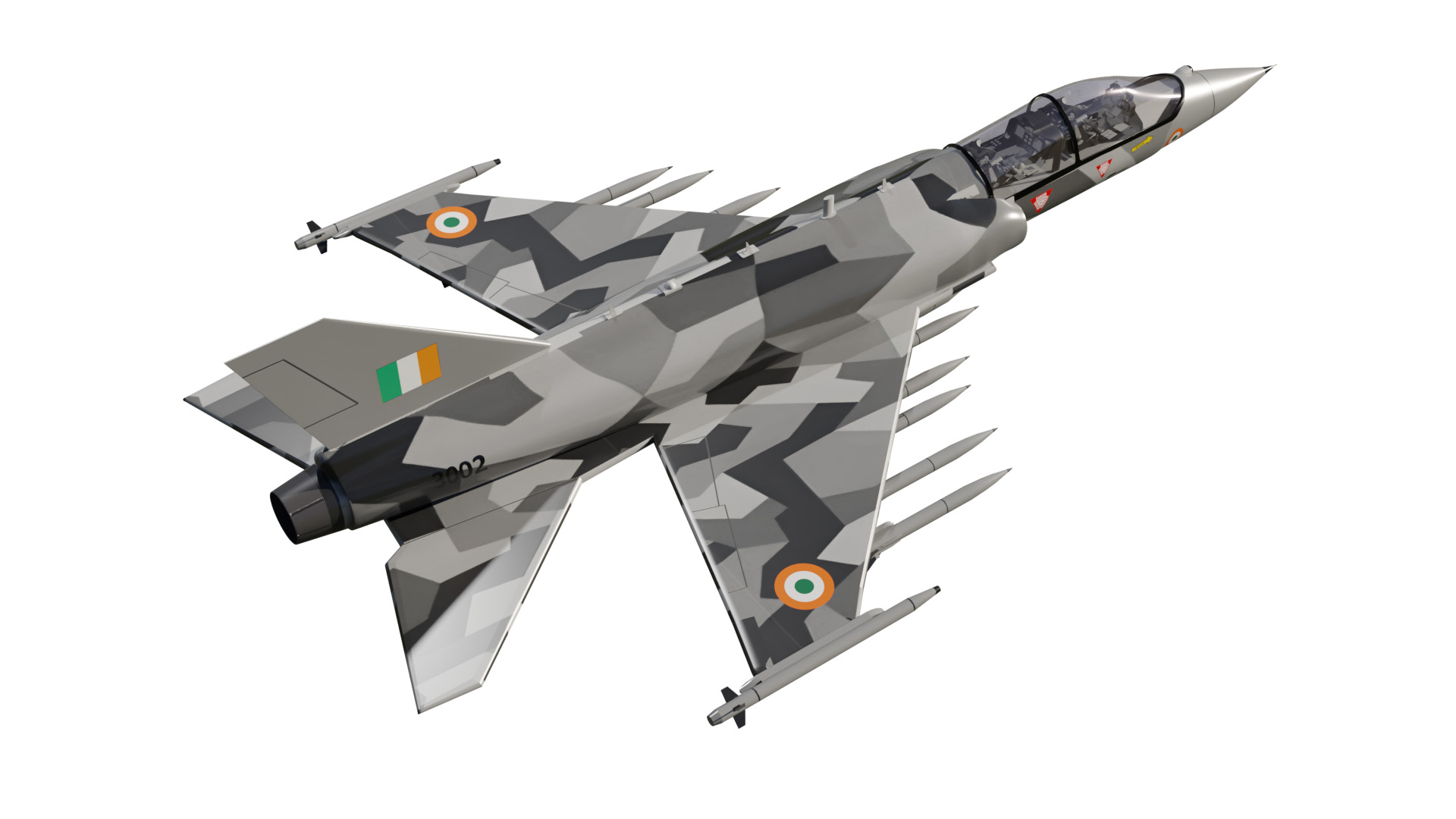 Indian defence company
Indian defence company HAL
HAL may refer to:
Aviation
* Halali Airport (IATA airport code: HAL) Halali, Oshikoto, Namibia
* Hawaiian Airlines (ICAO airline code: HAL)
* HAL Airport, Bangalore, India
* Hindustan Aeronautics Limited an Indian aerospace manufacturer of fight ...
and Defense Research Organization DRDO are developing several aircraft for the IAF such as the HAL Tejas Mk2,DRDO Ghatak
''Ghatak'' (pronounced: Help:IPA/Hindi, gʰɑːt̪ək) is an autonomous jet powered Stealth aircraft, stealthy unmanned combat air vehicle (UCAV), being developed by Aeronautical Development Establishment (ADE) of the Defence Research and Develop ...
UCAV. DRDO has developed the Akash missile system for the IAF and also developed the Prithvi II
Prithvi or Prithvi Mata (Sanskrit: पृथ्वी, ', also पृथिवी, ', "the Vast One") is the Sanskrit name for the earth, as well as the name of a devi (goddess) in Hinduism and some branches of Buddhism. In the Vedas, her conso ...
ballistic missile.
HAL is also close to develop its own fifth generation fighter aircraft HAL AMCA which will be inducted by 2028. DRDO has entered in a joint venture with Israel Aerospace Industries (IAI) to develop the Barak 8
Barak 8 ( he, בָּרָק, lit. "Lightning"), also known as LR-SAM or as MR-SAM, is an Indo-Israeli jointly developed surface-to-air missile (SAM) system, designed to defend against any type of airborne threat including aircraft, helicopters, ant ...
SAM. Akash-NG
Akash - New generation (IAST: Ākāśa ''"Sky"'') abbreviated as Akash-NG is a medium-range mobile surface-to-air missile defense system developed by the Defence Research and Development Organisation (DRDO) and produced by Bharat Dynamics Limi ...
is also being developed by DRDO which will be the same range of Barak 8
Barak 8 ( he, בָּרָק, lit. "Lightning"), also known as LR-SAM or as MR-SAM, is an Indo-Israeli jointly developed surface-to-air missile (SAM) system, designed to defend against any type of airborne threat including aircraft, helicopters, ant ...
.BrahMos
The BrahMos (also designated as PJ-10)[NPO Mashinostroeyenia
NPO Mashinostroyeniya (russian: НПО машиностроения, lit=RDA of machine manufacturing) is a rocket design bureau based in Reutov, Russia. During the Cold War it was responsible for several major weapons systems, including the UR-1 ...](_blank)
. DRDO has now successfully developed the nuclear capable Nirbhay cruise missile.
DRDO and HAL has also engaged in the unmanned combat system. According to this, HAL will develop the whole family of unmanned aircraft by the end of 2024–25
Network-centric warfare
The Air Force Network
Air Force Network (AFNet) is an Indian Air Force (IAF) owned, operated and managed digital information grid. The AFNet replaces the Indian Air Force's (IAF) old communication network set-up using the tropo-scatter technology of the 1950s making ...
(AFNET), a robust digital information grid that enabled quick and accurate threat responses, was launched in 2010, helping the IAF become a truly network-centric air force. AFNET is a secure communication network linking command and control centres with offensive aircraft, sensor platforms and ground missile batteries. Integrated Air Command and Control System (IACCS), an automated system for Air Defence operations will ride the AFNet backbone integrating ground and airborne sensors, weapon systems and command and control nodes. Subsequent integration with civil radar and other networks shall provide an integrated Air Situation Picture, and reportedly acts as a force multiplier
In military science, force multiplication or a force multiplier is a factor or a combination of factors that gives personnel or weapons (or other hardware) the ability to accomplish greater feats than without it. The expected size increase requ ...
for intelligence analysis, mission control, and support activities like maintenance and logistics. The design features multiple layers of security measures, including encryption and intrusion prevention technologies, to hinder and deter espionage efforts.
See also
* List of Indian Air Force Gallantry Award Winners
* List of Indian Army Gallantry Award Winners
* List of historical aircraft of the Indian Air Force
* Indian Air Force Football Team
References
Bibliography
*
*
*
*
*
*
*
*
*
*
*
*
*
*
*
*
*
*
*
*
*
*
*
*
*
*
*
*
*
*
*
*
External links
*
{{Authority control
Defence agencies of India
Military units and formations established in 1932
1931 establishments in India
Military history of India during World War II

 The IAF's mission is defined by the Armed Forces Act of 1947, the Constitution of India, and the Air Force Act of 1950. It decrees that in the aerial battlespace:
The IAF's mission is defined by the Armed Forces Act of 1947, the Constitution of India, and the Air Force Act of 1950. It decrees that in the aerial battlespace:
 The Indian Air Force was established on 8 October 1932 in British India as an auxiliary air force of the Royal Air Force. The enactment of the Indian Air Force Act 1932 stipulated out their auxiliary status and enforced the adoption of the Royal Air Force uniforms, badges, brevets and insignia. On 1 April 1933, the IAF commissioned its first squadron, No.1 Squadron, with four Westland Wapiti biplanes and five Indian pilots. The Indian pilots were led by British RAF Commanding officer Flight Lieutenant (later Air Vice Marshal)
The Indian Air Force was established on 8 October 1932 in British India as an auxiliary air force of the Royal Air Force. The enactment of the Indian Air Force Act 1932 stipulated out their auxiliary status and enforced the adoption of the Royal Air Force uniforms, badges, brevets and insignia. On 1 April 1933, the IAF commissioned its first squadron, No.1 Squadron, with four Westland Wapiti biplanes and five Indian pilots. The Indian pilots were led by British RAF Commanding officer Flight Lieutenant (later Air Vice Marshal)  During World War II, the IAF played an instrumental role in halting the advance of the
During World War II, the IAF played an instrumental role in halting the advance of the  After it became independent from the British Empire in 1947, British India was partitioned into the new states of the Dominion of India and the Dominion of Pakistan. Along the lines of the geographical partition, the assets of the air force were divided between the new countries. India's air force retained the name of the Royal Indian Air Force, but three of the ten operational squadrons and facilities, located within the borders of Pakistan, were transferred to the Royal Pakistan Air Force. The RIAF Roundel was changed to an interim 'Chakra' roundel derived from the Ashoka Chakra.
Around the same time, conflict broke out between them over the control of the princely state of Jammu & Kashmir. With Pakistani forces moving into the state, its Maharaja decided to accede to India in order to receive military help. The day after, the Instrument of Accession was signed, the RIAF was called upon to transport troops into the war zone. And this was when a good management of logistics came into help. This led to the eruption of full-scale war between India and Pakistan, though there was no formal declaration of war. During the war, the RIAF did not engage the Pakistan Air Force in air-to-air combat; however, a couple of IAF Hawker Tempest fighters did intercept a Pakistani Douglas DC-3 transport aircraft & tried to shoot it down but the pilot of the DC-3 (
After it became independent from the British Empire in 1947, British India was partitioned into the new states of the Dominion of India and the Dominion of Pakistan. Along the lines of the geographical partition, the assets of the air force were divided between the new countries. India's air force retained the name of the Royal Indian Air Force, but three of the ten operational squadrons and facilities, located within the borders of Pakistan, were transferred to the Royal Pakistan Air Force. The RIAF Roundel was changed to an interim 'Chakra' roundel derived from the Ashoka Chakra.
Around the same time, conflict broke out between them over the control of the princely state of Jammu & Kashmir. With Pakistani forces moving into the state, its Maharaja decided to accede to India in order to receive military help. The day after, the Instrument of Accession was signed, the RIAF was called upon to transport troops into the war zone. And this was when a good management of logistics came into help. This led to the eruption of full-scale war between India and Pakistan, though there was no formal declaration of war. During the war, the RIAF did not engage the Pakistan Air Force in air-to-air combat; however, a couple of IAF Hawker Tempest fighters did intercept a Pakistani Douglas DC-3 transport aircraft & tried to shoot it down but the pilot of the DC-3 ( When India became a republic in 1950, the prefix 'Royal' was dropped from the Indian Air Force. At the same time, the current IAF roundel was adopted.
When India became a republic in 1950, the prefix 'Royal' was dropped from the Indian Air Force. At the same time, the current IAF roundel was adopted.
 In 1962, border disagreements between China and India escalated to a war when China mobilised its troops across the Indian border. During the Sino-Indian War, India's military planners failed to deploy and effectively use the IAF against the invading Chinese forces. This resulted in India losing a significant amount of advantage to the Chinese; especially in
In 1962, border disagreements between China and India escalated to a war when China mobilised its troops across the Indian border. During the Sino-Indian War, India's military planners failed to deploy and effectively use the IAF against the invading Chinese forces. This resulted in India losing a significant amount of advantage to the Chinese; especially in  After the 1965 war, the IAF underwent a series of changes to improve its capabilities. In 1966, the Para Commandos regiment was created. To increase its logistics supply and rescue operations ability, the IAF inducted 72
After the 1965 war, the IAF underwent a series of changes to improve its capabilities. In 1966, the Para Commandos regiment was created. To increase its logistics supply and rescue operations ability, the IAF inducted 72  By late 1971, the intensification of the independence movement in East Pakistan lead to the
By late 1971, the intensification of the independence movement in East Pakistan lead to the 
 Within the first two weeks, the IAF had carried out almost 12,000 sorties over East Pakistan and also provided
Within the first two weeks, the IAF had carried out almost 12,000 sorties over East Pakistan and also provided  Following the inability to negotiate an end to the Sri Lankan Civil War, and to provide humanitarian aid through an unarmed convoy of ships, the Indian Government decided to carry out an airdrop of the humanitarian supplies on the evening of 4 June 1987 designated Operation Poomalai ( Tamil: Garland) or Eagle Mission 4. Five An-32s escorted by four
Following the inability to negotiate an end to the Sri Lankan Civil War, and to provide humanitarian aid through an unarmed convoy of ships, the Indian Government decided to carry out an airdrop of the humanitarian supplies on the evening of 4 June 1987 designated Operation Poomalai ( Tamil: Garland) or Eagle Mission 4. Five An-32s escorted by four  ''Note: + = Functional Command''
''Note: + = Functional Command''
 All Garuds are volunteers who are imparted a 52-week basic training, which includes a three-month probation followed by special operations training, basic airborne training and other warfare and survival skills. The last phase of basic training sees Garuds been deployed to get combat experience. Advanced training follows, which includes specialised weapons training.
The mandated tasks of the Garuds include direct action, special reconnaissance, rescuing downed pilots in hostile territory, establishing airbases in hostile territory and providing air-traffic control to these airbases. The Garuds also undertake suppression of enemy air defences and the destruction of other enemy assets such as radars, evaluation of the outcomes of Indian airstrikes and use laser designators to guide Indian airstrikes.
The security of IAF installations and assets are usually performed by the Air Force Police and the
All Garuds are volunteers who are imparted a 52-week basic training, which includes a three-month probation followed by special operations training, basic airborne training and other warfare and survival skills. The last phase of basic training sees Garuds been deployed to get combat experience. Advanced training follows, which includes specialised weapons training.
The mandated tasks of the Garuds include direct action, special reconnaissance, rescuing downed pilots in hostile territory, establishing airbases in hostile territory and providing air-traffic control to these airbases. The Garuds also undertake suppression of enemy air defences and the destruction of other enemy assets such as radars, evaluation of the outcomes of Indian airstrikes and use laser designators to guide Indian airstrikes.
The security of IAF installations and assets are usually performed by the Air Force Police and the  ''The Surya Kiran Aerobatic Team (SKAT)'' (''Surya Kiran'' is Sanskrit for ''Sun Rays'') is an aerobatics demonstration team of the Indian Air Force. They were formed in 1996 and are successors to the ''Thunderbolts''. The team has a total of 13 pilots (selected from the fighter stream of the IAF) and operate 9 HAL HJT-16 Kiran Mk.2 trainer aircraft painted in a "day-glo orange" and white colour scheme. The Surya Kiran team were conferred squadron status in 2006, and presently have the designation of 52 Squadron (''"The Sharks"''). The team is based at the Indian Air Force Station at Bidar. The IAF has begun the process of converting Surya Kirans to BAE Hawks.
''Sarang'' ( Sanskrit for ''Peacock'') is the Helicopter Display Team of the Indian Air Force. The team was formed in October 2003 and their first public performance was at the Asian Aerospace Show, Singapore, 2004. The team flies four HAL Dhruvs painted in red and white with a peacock figure at each side of the fuselage. The team is based at the
''The Surya Kiran Aerobatic Team (SKAT)'' (''Surya Kiran'' is Sanskrit for ''Sun Rays'') is an aerobatics demonstration team of the Indian Air Force. They were formed in 1996 and are successors to the ''Thunderbolts''. The team has a total of 13 pilots (selected from the fighter stream of the IAF) and operate 9 HAL HJT-16 Kiran Mk.2 trainer aircraft painted in a "day-glo orange" and white colour scheme. The Surya Kiran team were conferred squadron status in 2006, and presently have the designation of 52 Squadron (''"The Sharks"''). The team is based at the Indian Air Force Station at Bidar. The IAF has begun the process of converting Surya Kirans to BAE Hawks.
''Sarang'' ( Sanskrit for ''Peacock'') is the Helicopter Display Team of the Indian Air Force. The team was formed in October 2003 and their first public performance was at the Asian Aerospace Show, Singapore, 2004. The team flies four HAL Dhruvs painted in red and white with a peacock figure at each side of the fuselage. The team is based at the 


 Over the years reliable sources provided notably divergent estimates of the personnel strength of the Indian Air Force after analysing open-source intelligence. In 2006, Anthony Cordesman estimated that strength to be 170,000 in the International Institute for Strategic Studies (IISS) publication ''"The Asian Conventional Military Balance in 2006"''. In 2010, James Hackett revised that estimate to an approximate strength of 127,000 active personnel in the IISS publication ''"Military Balance 2010"''.
, the Indian Air Force has a sanctioned strength of 12,550 officers (12,404 serving with 146 under strength), and 142,529 airmen (127,172 serving with 15,357 under strength).
Over the years reliable sources provided notably divergent estimates of the personnel strength of the Indian Air Force after analysing open-source intelligence. In 2006, Anthony Cordesman estimated that strength to be 170,000 in the International Institute for Strategic Studies (IISS) publication ''"The Asian Conventional Military Balance in 2006"''. In 2010, James Hackett revised that estimate to an approximate strength of 127,000 active personnel in the IISS publication ''"Military Balance 2010"''.
, the Indian Air Force has a sanctioned strength of 12,550 officers (12,404 serving with 146 under strength), and 142,529 airmen (127,172 serving with 15,357 under strength).
 The duty of an airman is to make sure that all the air and ground operations run smoothly. From operating Air Defence systems to fitting missiles, they are involved in all activities of an air base and give support to various technical and non-technical jobs. The airmen of Technical trades are responsible for maintenance, repair and prepare for use the propulsion system of aircraft and other airborne weapon delivery system, Radar, Voice/Data transmission and reception equipment, latest airborne weapon delivery systems, all types of light, mechanical, hydraulic, pneumatic systems of airborne missiles, aero engines, aircraft fuelling equipment and heavy duty mechanical vehicles, cranes and loading equipment etc. The competent and qualified Airmen from Technical trades also participate in flying as Flight Engineers, Flight Signallers and Flight Gunners. The recruitment of personnel below officer rank is conducted through All India Selection Tests and Recruitment Rallies. All India Selection Tests are conducted among 15 Airmen Selection Centres (ASCs) located all over India. These centres are under the direct functional control of Central Airmen Selection Board (CASB), with administrative control and support by respective commands. The role of CASB is to carry out selection and enrolment of airmen from the Airmen Selection Centres for their respective commands. Candidates initially take a written test at the time of application. Those passing the written test undergo a physical fitness test, an interview conducted in English, and medical examination. Candidates for training are selected from individuals passing the battery of tests, on the basis of their performance. Upon completion of training, an individual becomes an Airman. Some MWOs and WOs are granted honorary commission in the last year of their service as an honorary Flying Officer or
The duty of an airman is to make sure that all the air and ground operations run smoothly. From operating Air Defence systems to fitting missiles, they are involved in all activities of an air base and give support to various technical and non-technical jobs. The airmen of Technical trades are responsible for maintenance, repair and prepare for use the propulsion system of aircraft and other airborne weapon delivery system, Radar, Voice/Data transmission and reception equipment, latest airborne weapon delivery systems, all types of light, mechanical, hydraulic, pneumatic systems of airborne missiles, aero engines, aircraft fuelling equipment and heavy duty mechanical vehicles, cranes and loading equipment etc. The competent and qualified Airmen from Technical trades also participate in flying as Flight Engineers, Flight Signallers and Flight Gunners. The recruitment of personnel below officer rank is conducted through All India Selection Tests and Recruitment Rallies. All India Selection Tests are conducted among 15 Airmen Selection Centres (ASCs) located all over India. These centres are under the direct functional control of Central Airmen Selection Board (CASB), with administrative control and support by respective commands. The role of CASB is to carry out selection and enrolment of airmen from the Airmen Selection Centres for their respective commands. Candidates initially take a written test at the time of application. Those passing the written test undergo a physical fitness test, an interview conducted in English, and medical examination. Candidates for training are selected from individuals passing the battery of tests, on the basis of their performance. Upon completion of training, an individual becomes an Airman. Some MWOs and WOs are granted honorary commission in the last year of their service as an honorary Flying Officer or 
 * Dassault Rafale: the latest addition to India's aircraft arsenal; India has signed a deal for 36 Dassault Rafale
* Dassault Rafale: the latest addition to India's aircraft arsenal; India has signed a deal for 36 Dassault Rafale  The IAF currently operates six
The IAF currently operates six  For strategic airlift operations, the IAF uses the
For strategic airlift operations, the IAF uses the  The HAL HPT-32 Deepak is IAF's basic flight training aircraft for cadets. The HPT-32 was grounded in July 2009 following a crash that killed two senior flight instructors, but was revived in May 2010 and is to be fitted with a parachute recovery system (PRS) to enhance survivability during an emergency in the air and to bring the trainer down safely. The HPT-32 is to be phased out soon. initially by 75 trainers Pilatus aircraft, and followed by 70 HTT-40 trainers. 36 more HTT-40s to be ordered once fleet is operational. The IAF uses the HAL HJT-16 Kiran mk.I for intermediate flight training of cadets, while the HJT-16 Kiran mk.II provides advanced flight and weapons training. The HAL HJT-16 Kiran Mk.2 is also operated by the
The HAL HPT-32 Deepak is IAF's basic flight training aircraft for cadets. The HPT-32 was grounded in July 2009 following a crash that killed two senior flight instructors, but was revived in May 2010 and is to be fitted with a parachute recovery system (PRS) to enhance survivability during an emergency in the air and to bring the trainer down safely. The HPT-32 is to be phased out soon. initially by 75 trainers Pilatus aircraft, and followed by 70 HTT-40 trainers. 36 more HTT-40s to be ordered once fleet is operational. The IAF uses the HAL HJT-16 Kiran mk.I for intermediate flight training of cadets, while the HJT-16 Kiran mk.II provides advanced flight and weapons training. The HAL HJT-16 Kiran Mk.2 is also operated by the  The
The 
 The IAF has placed orders for 123
The IAF has placed orders for 123 

 Indian defence company
Indian defence company